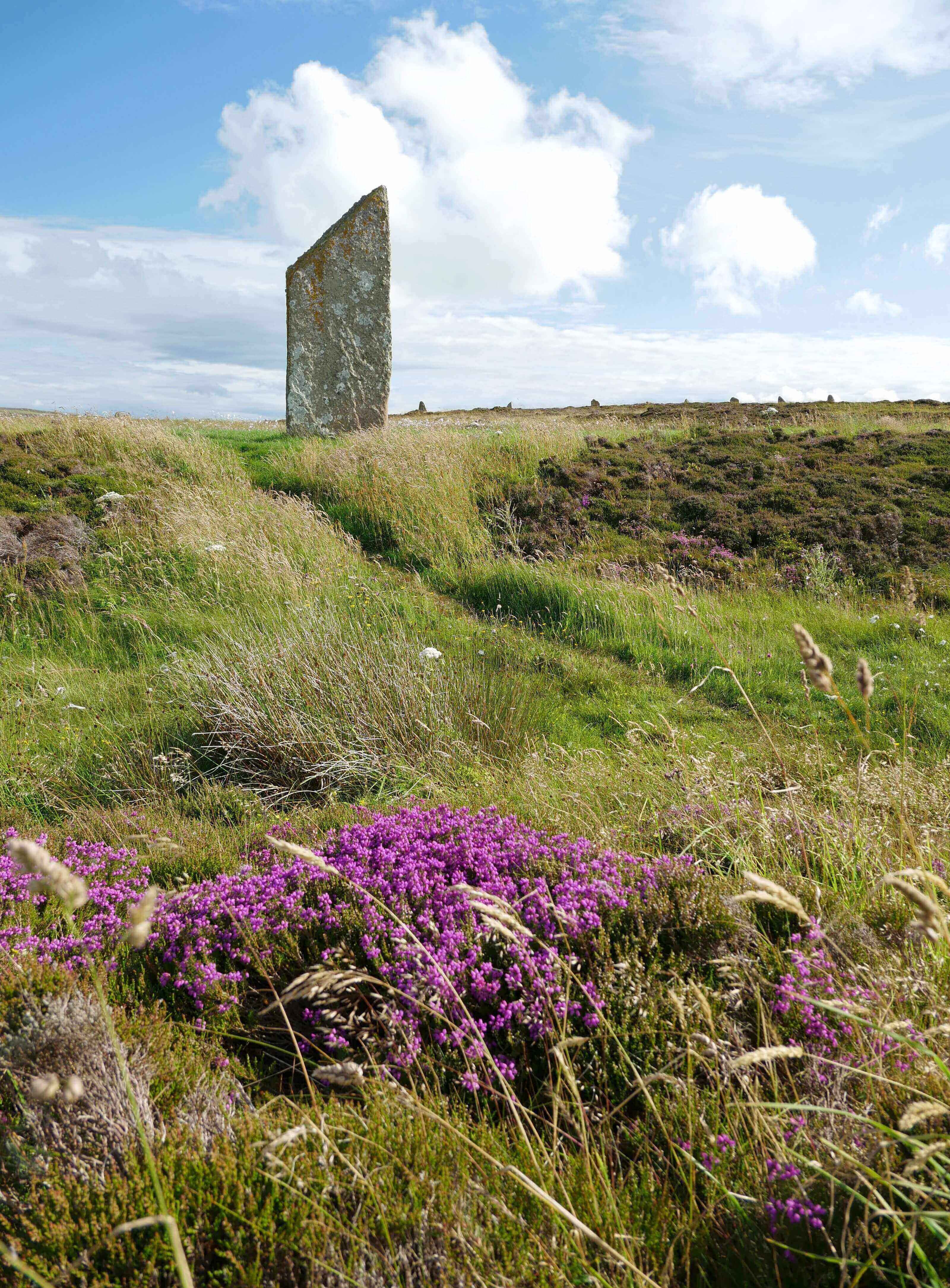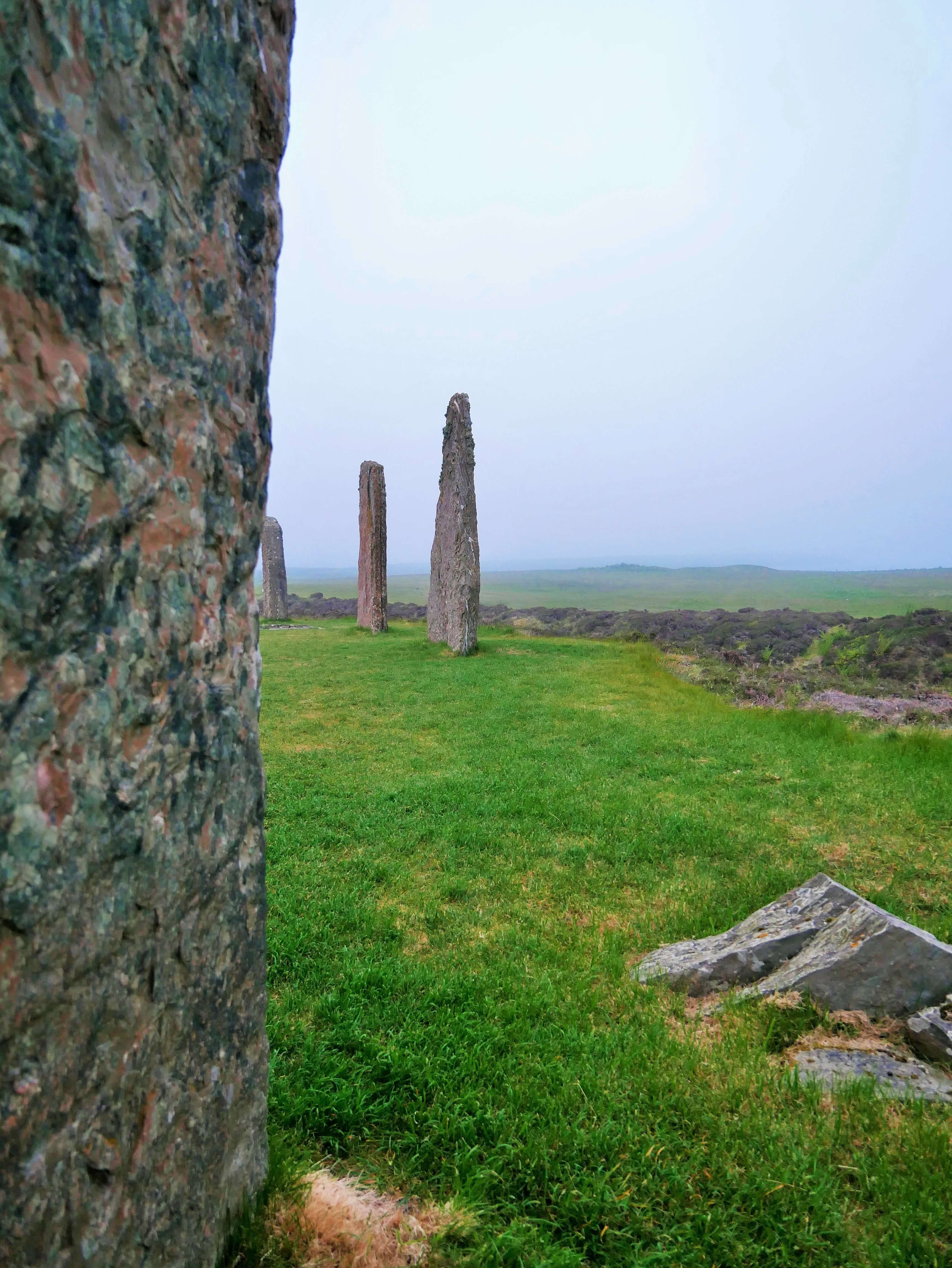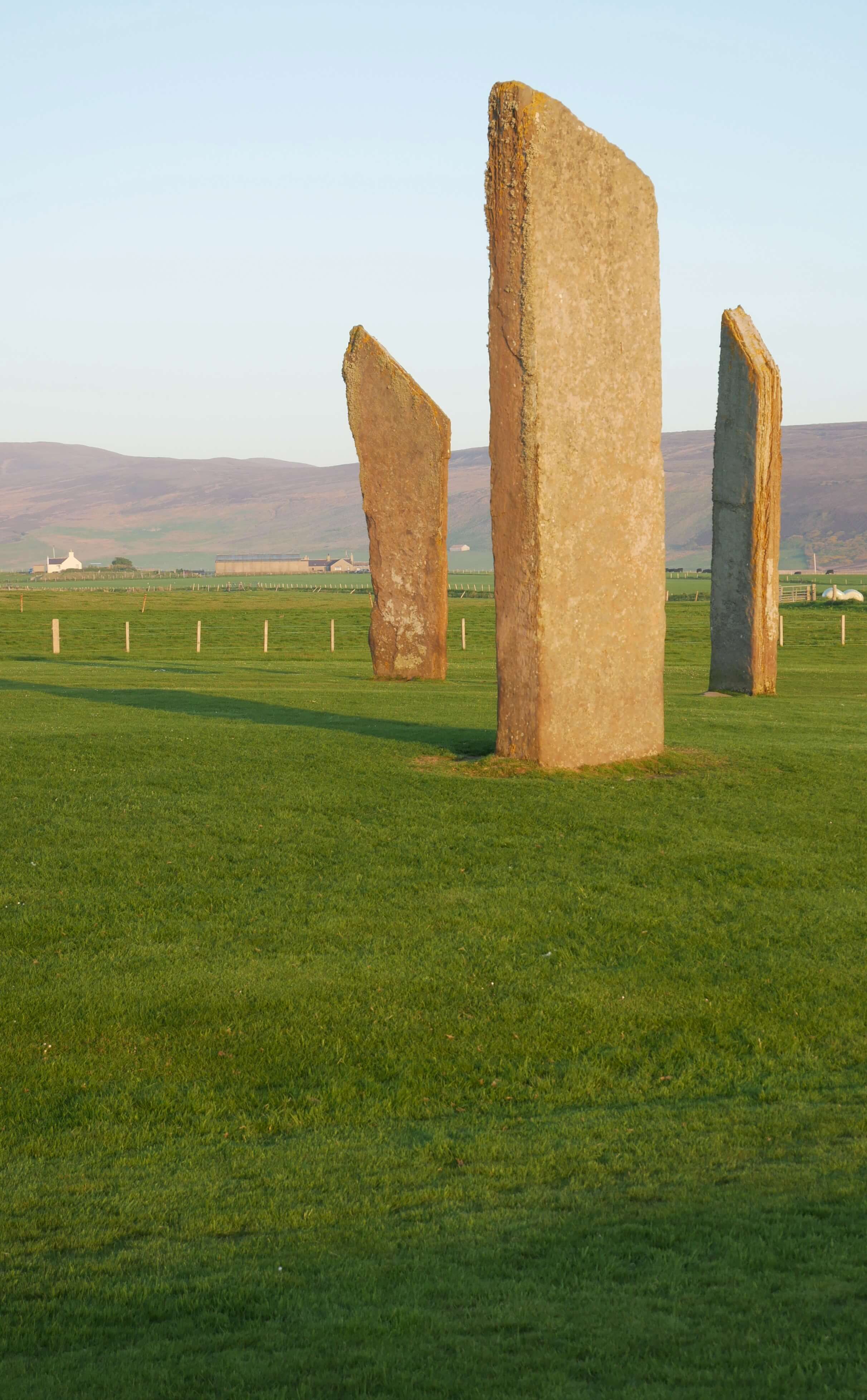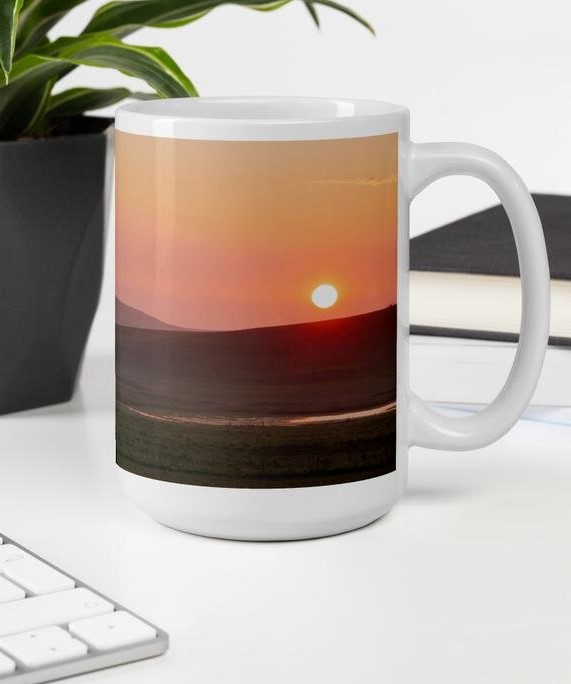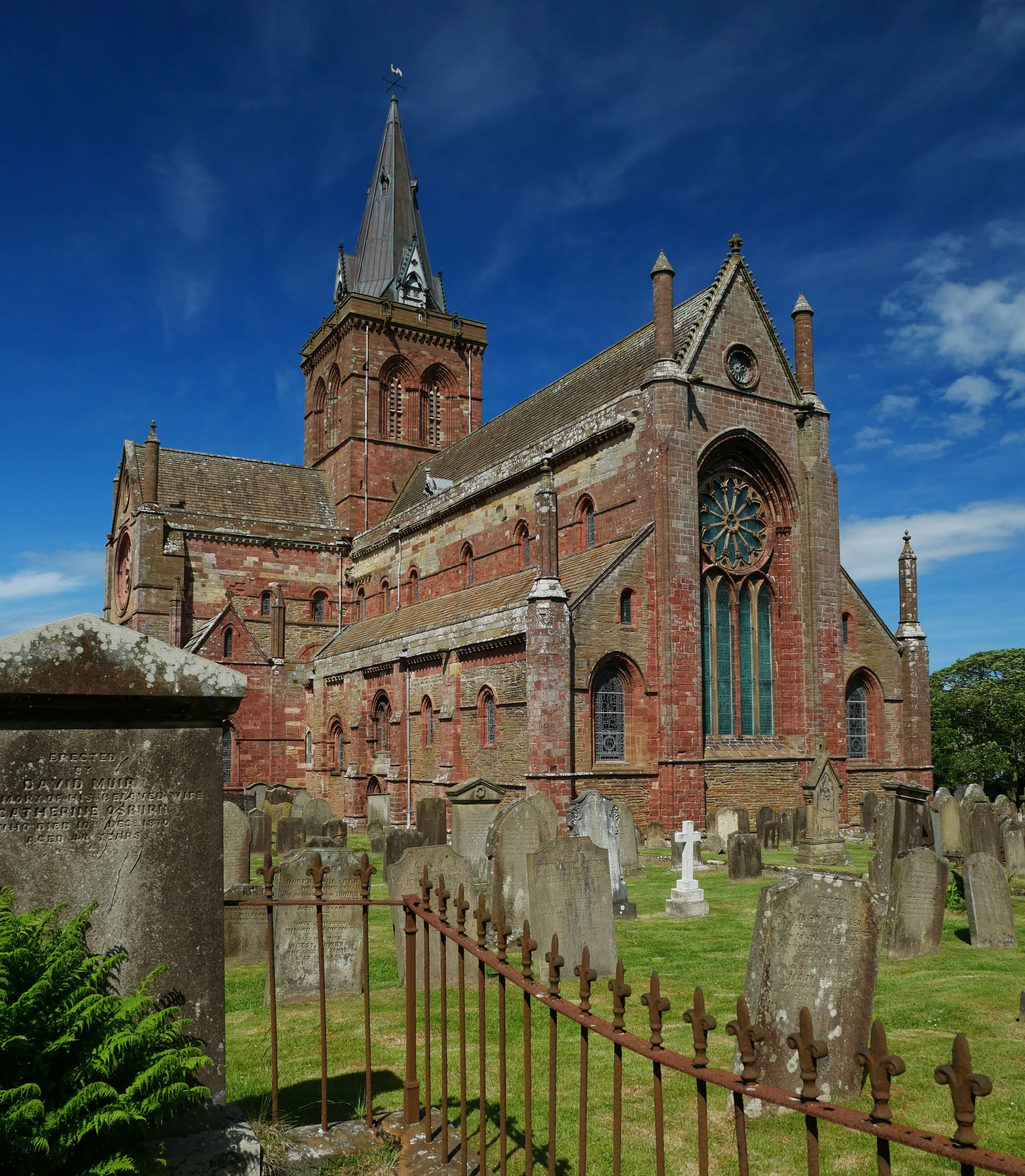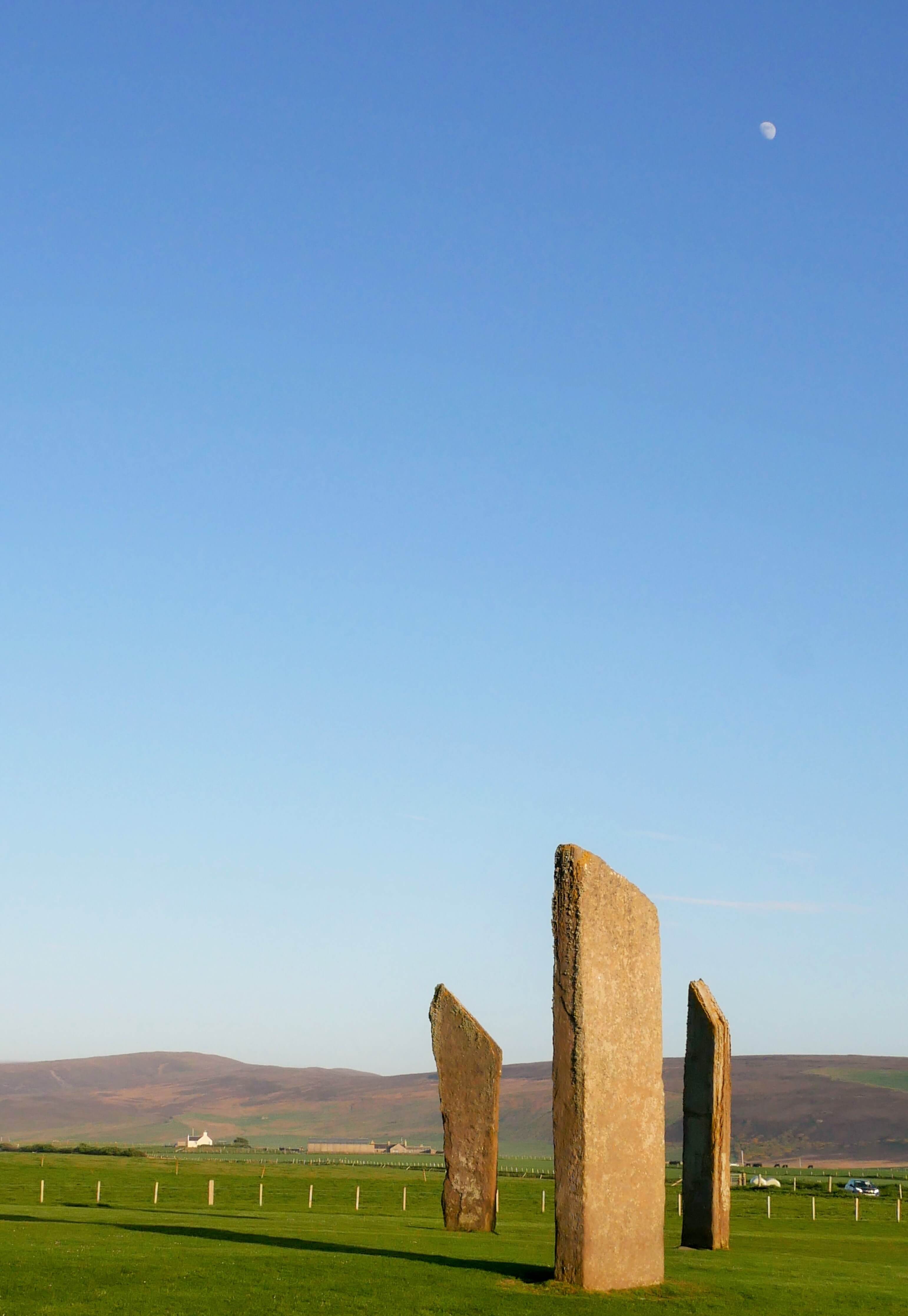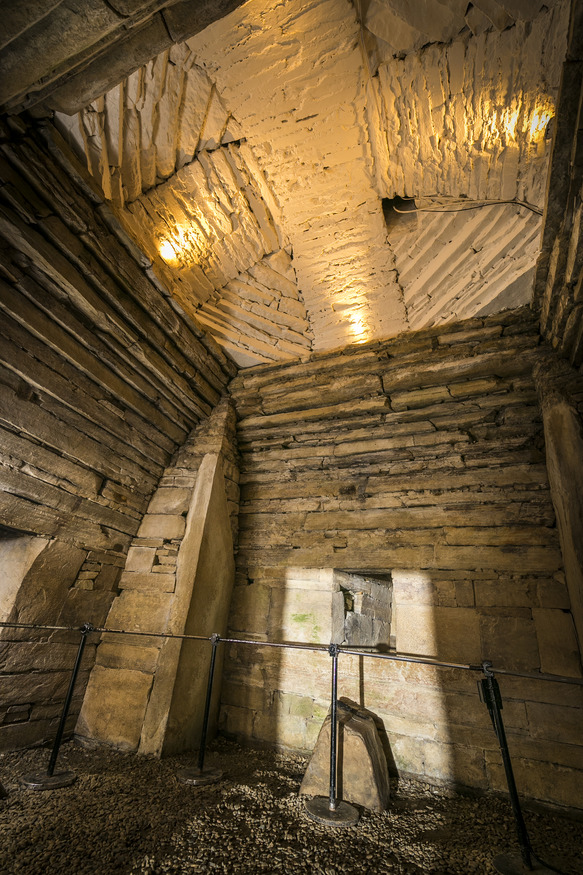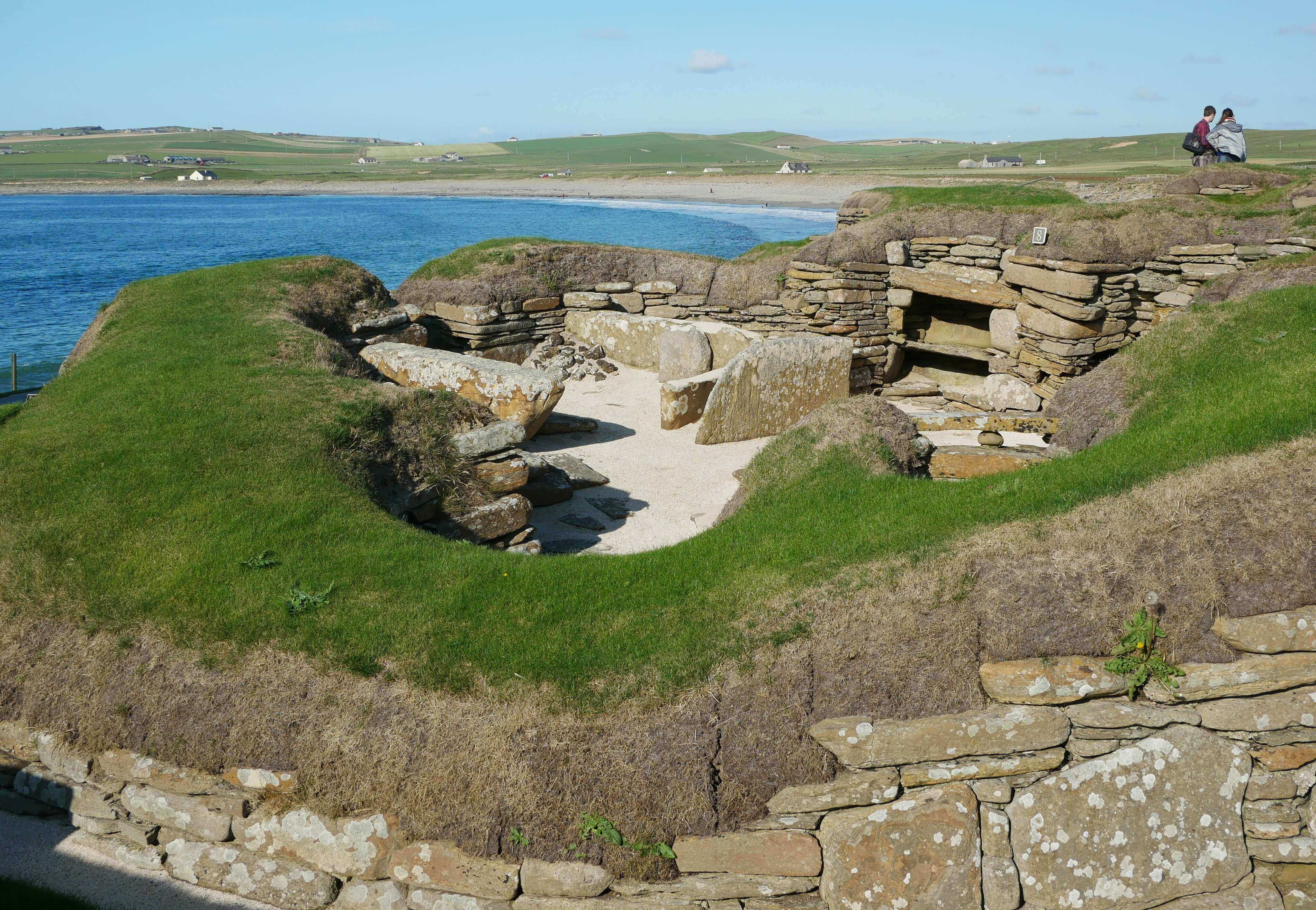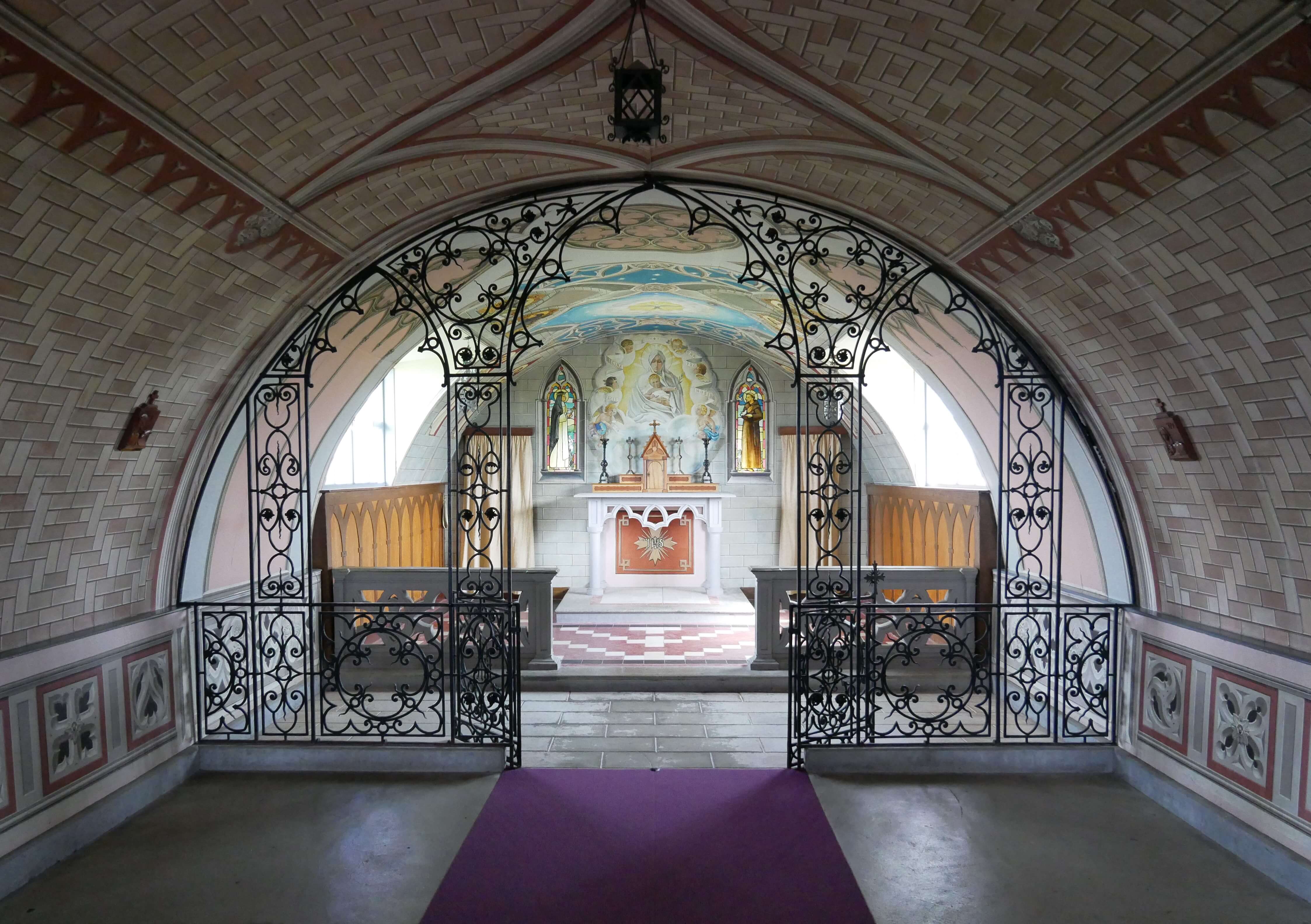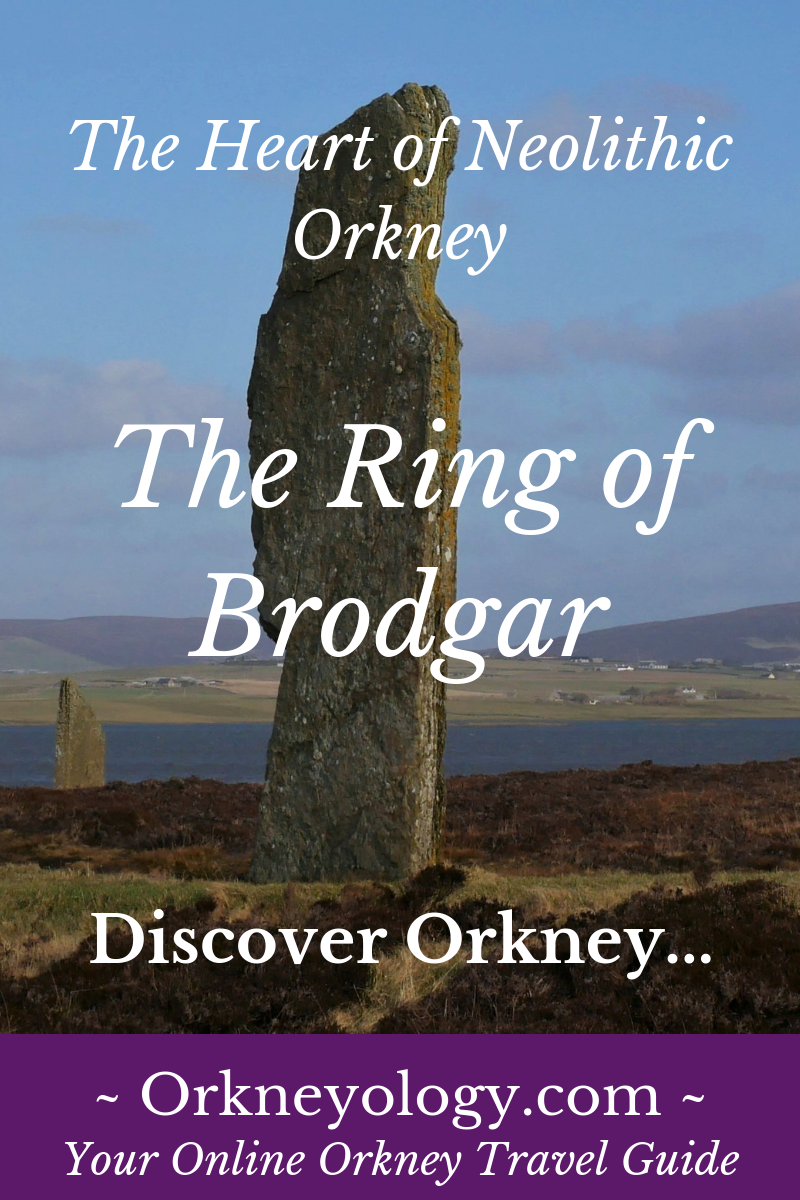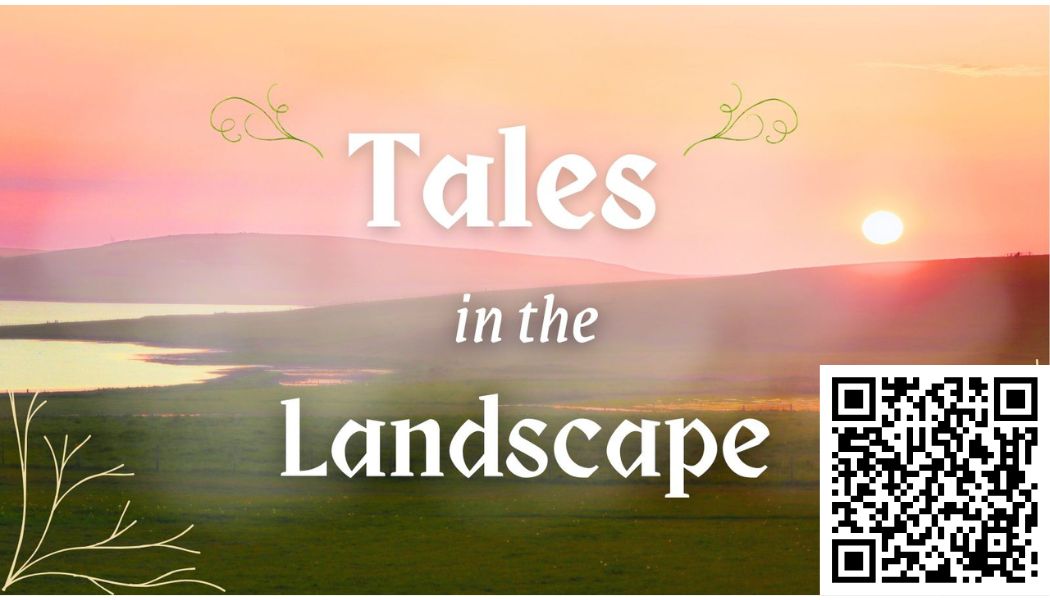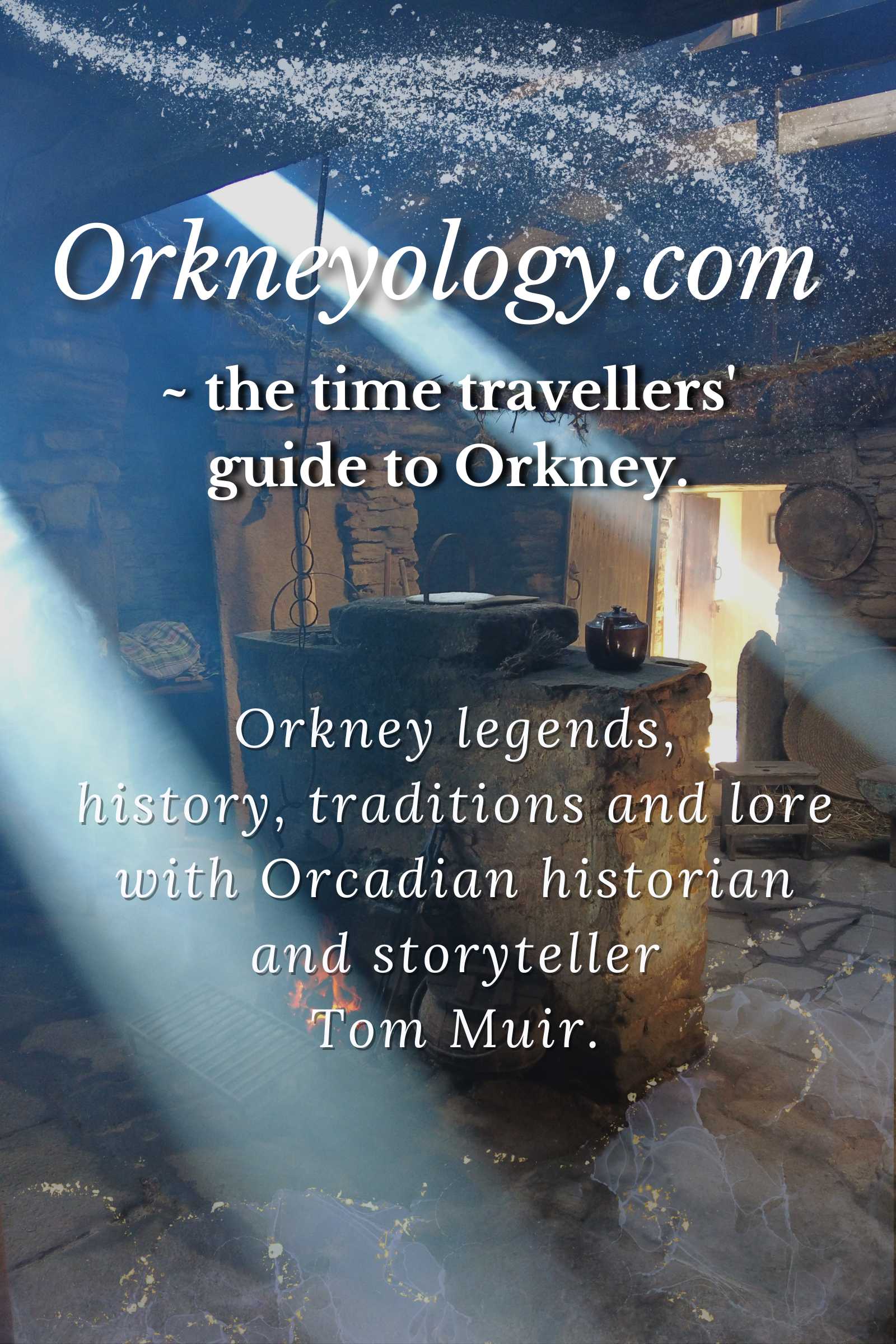The Ring of Brodgar
Orkney's Legendary Dancing Giants
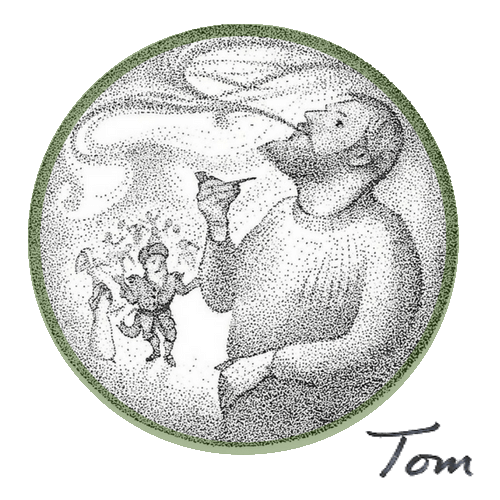
The Ring of Brodgar is one of Orkney's most beautiful and mysterious sites. And in a place as remarkable as Orkney, that's saying a lot.
What's on this page?
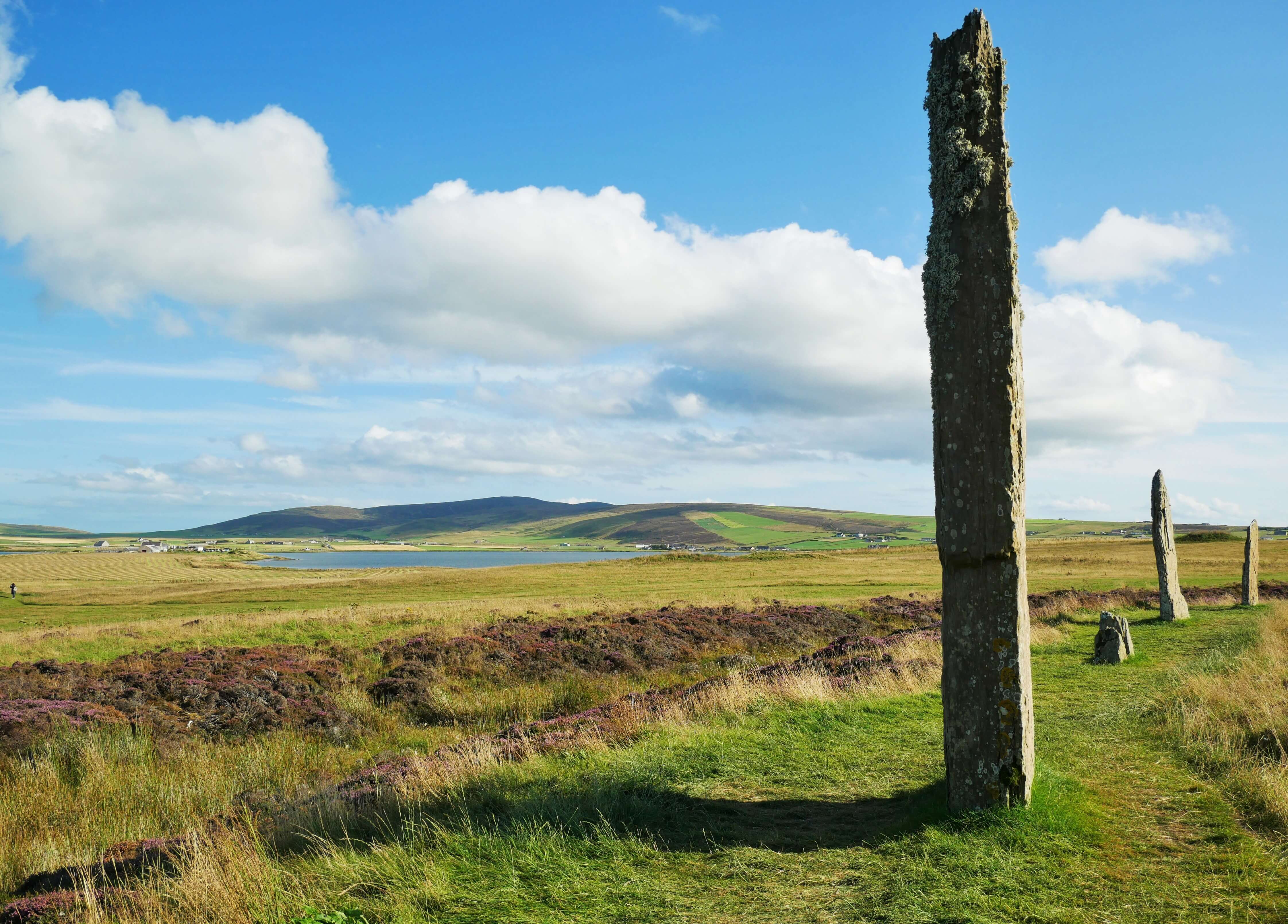
Quarrying the stones
People ask me, “Where did the stones come from?”
The answer seems to be – from all over Orkney.
At a site at Vestrafiold in Sandwick, eight miles away, you can still see quarried standing stones that ancient builders left propped up on supports.
These stones have been waiting for millennia to be taken away on rollers.
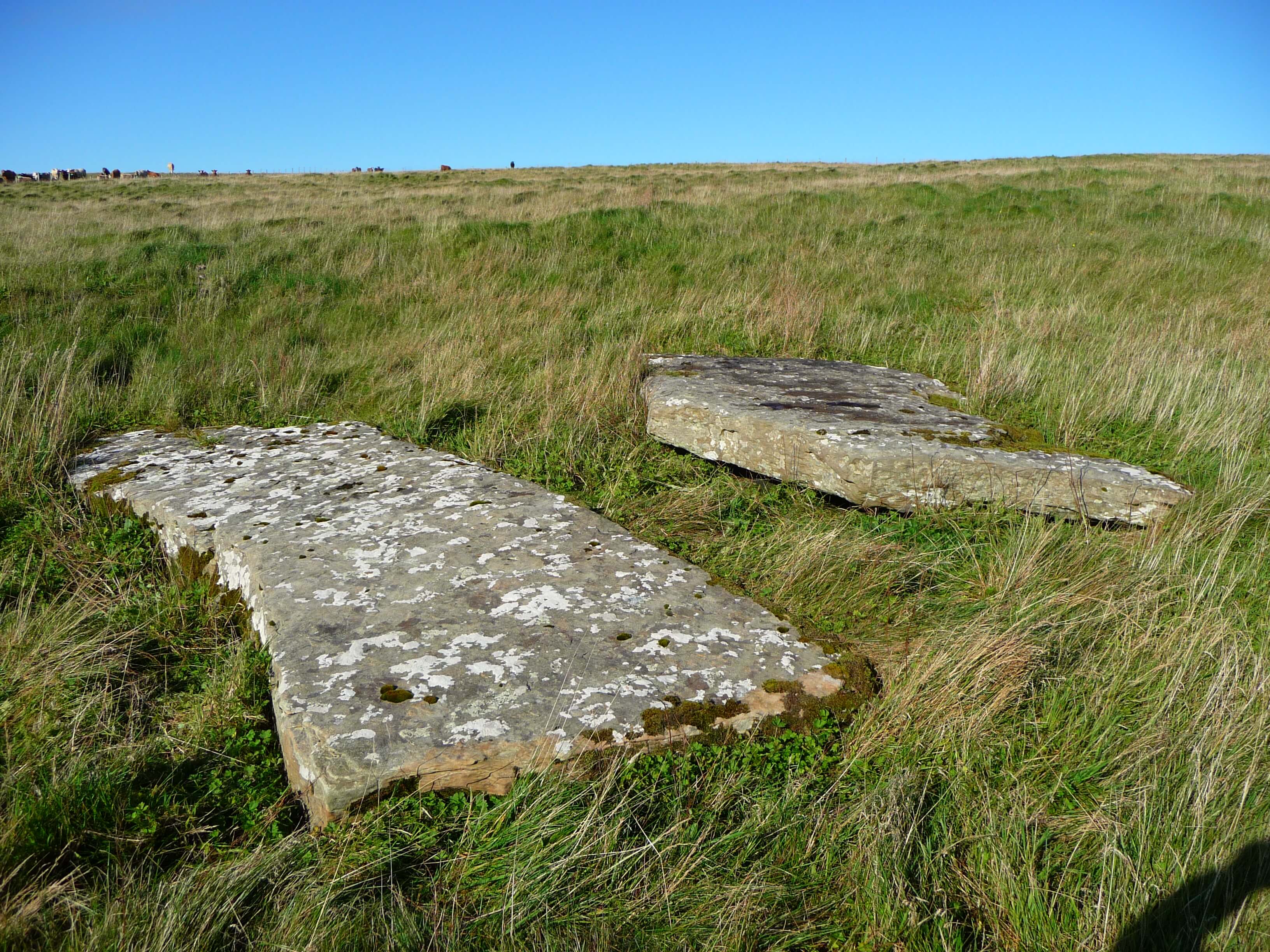
Naturally, I love the Ring of Brodgar and have visited our inspiring stone circle many times.
I've also been lucky enough to work on this amazing site with my friend, Professor of Archaeology Colin Richards.
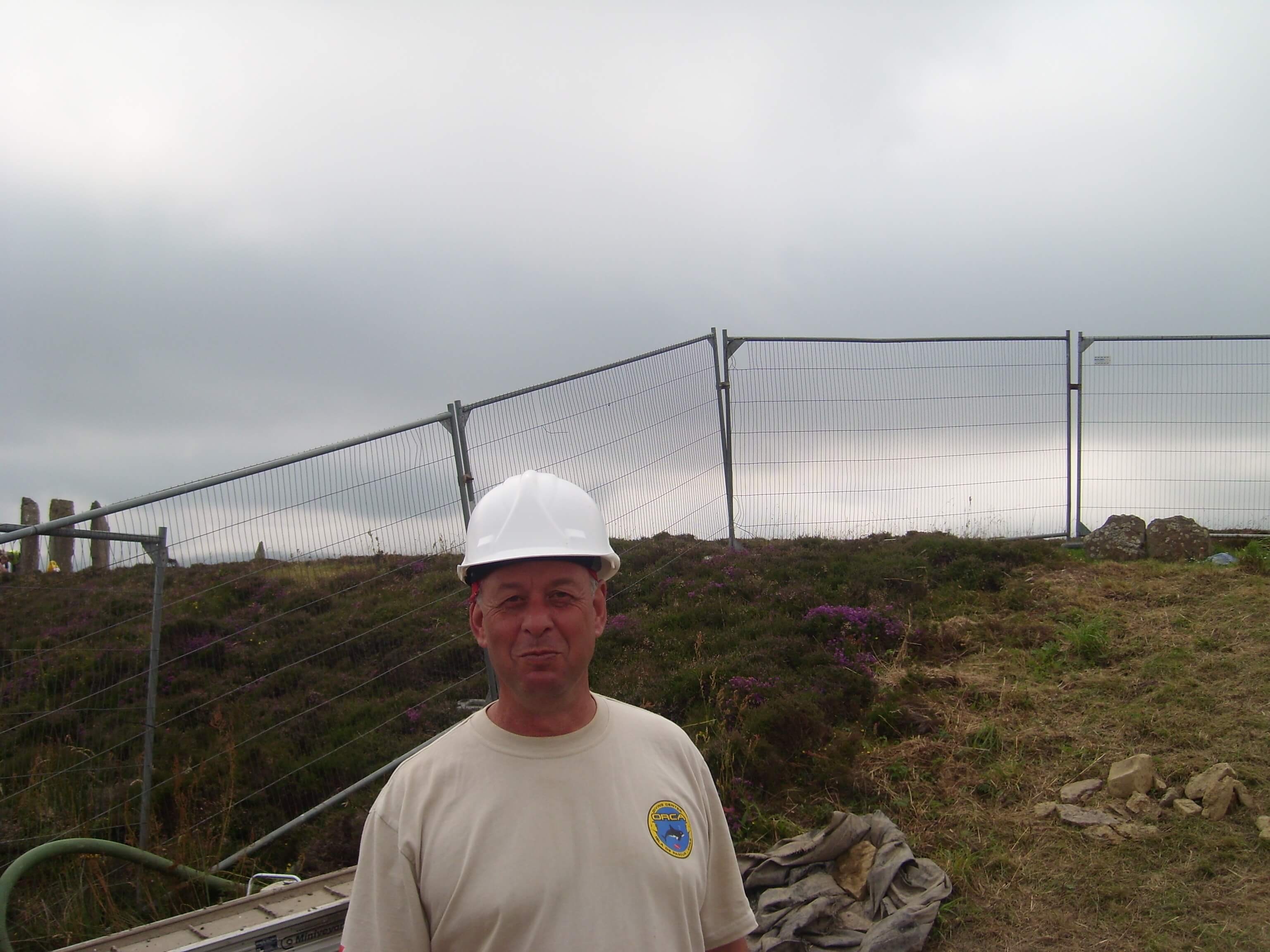
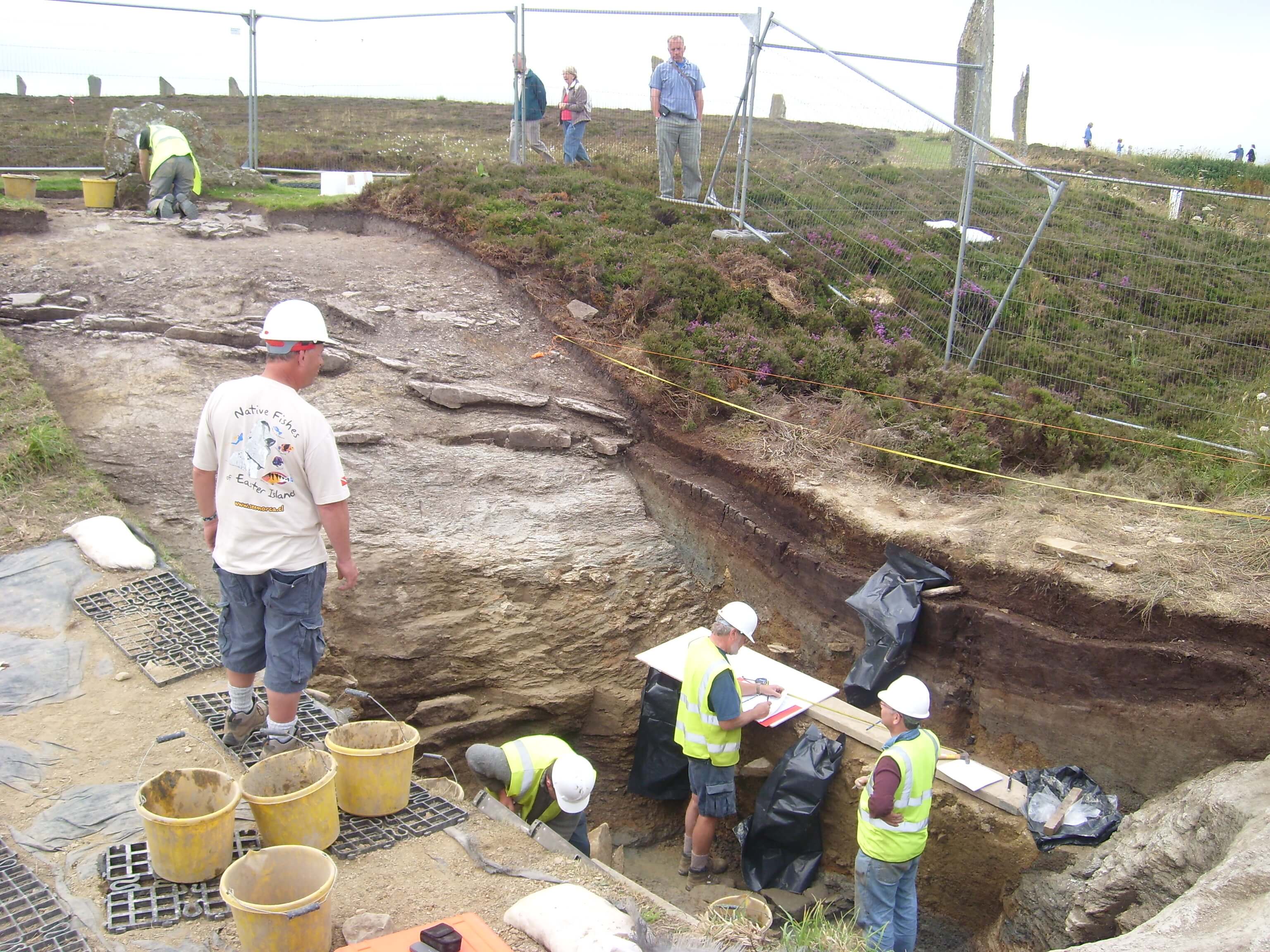 Colin Richards is on the left on an archaeological dig in the ditch around the ring.
Colin Richards is on the left on an archaeological dig in the ditch around the ring.Not just grey ...
I once visited the ring with Colin and geologist Dr John Brown. That was a fascinating experience.
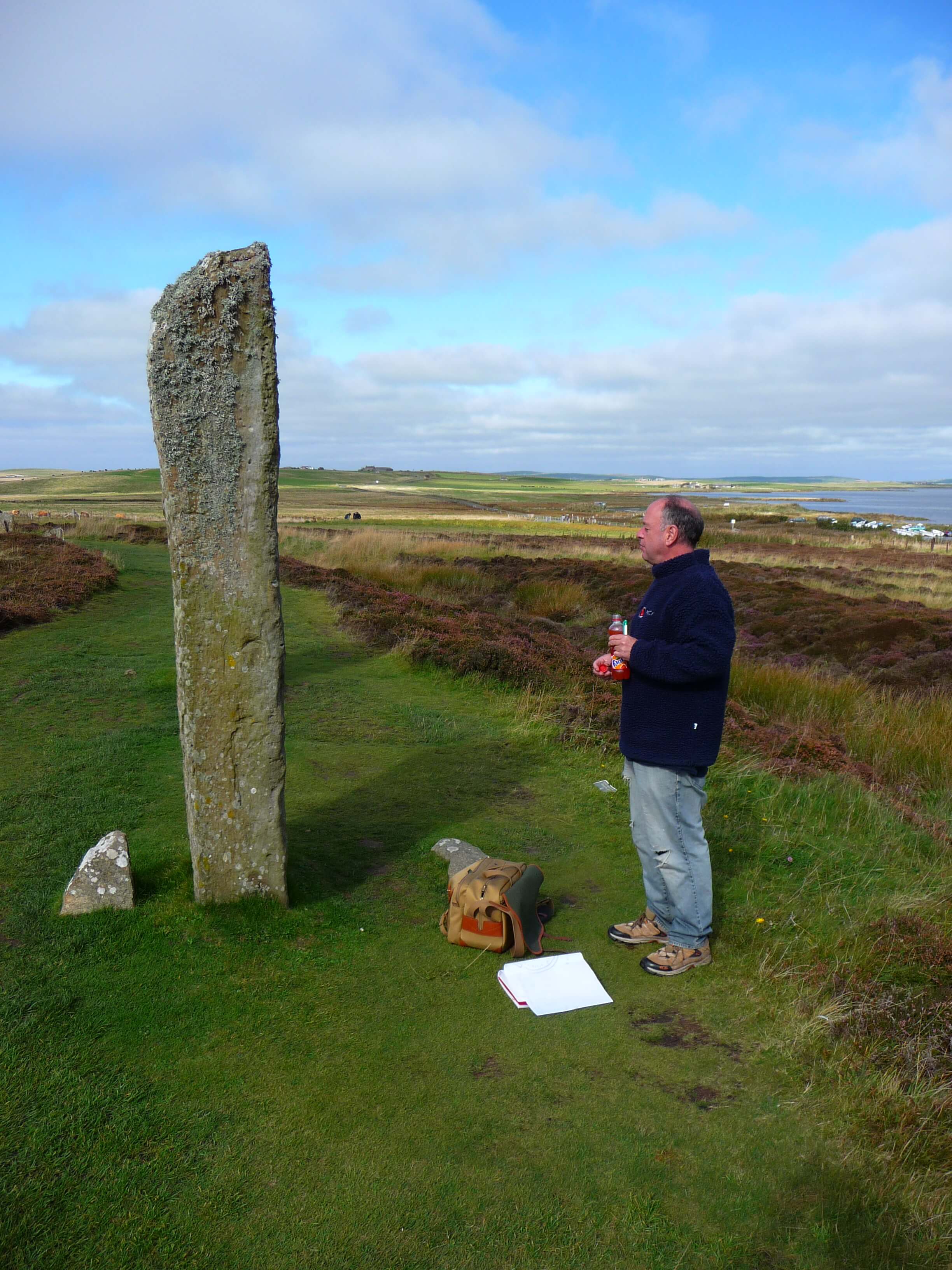
John identified different types of stone that the builders used, including reddish stones placed on either side of the causeways.
Vestrafiold is only one source for the standing stones of Brodgar. Interestingly, a single yellow stone came from an outcrop of rock at Houton in Orphir, some nine miles away.
This yellow stone, now only a broken piece, would have contrasted beautifully with the reddish-brown and blue-grey stones that make up the rest of the circle.
Neolithic builders would have had to either drag the stone around the hills or float it along the coast on a raft.
The Stenness Loch was not joined to the sea in Neolithic times. The loch would have been a mixture of standing water and marsh land then, so they could not have used rafts to float the stone over. They must have painstakingly dragged it.
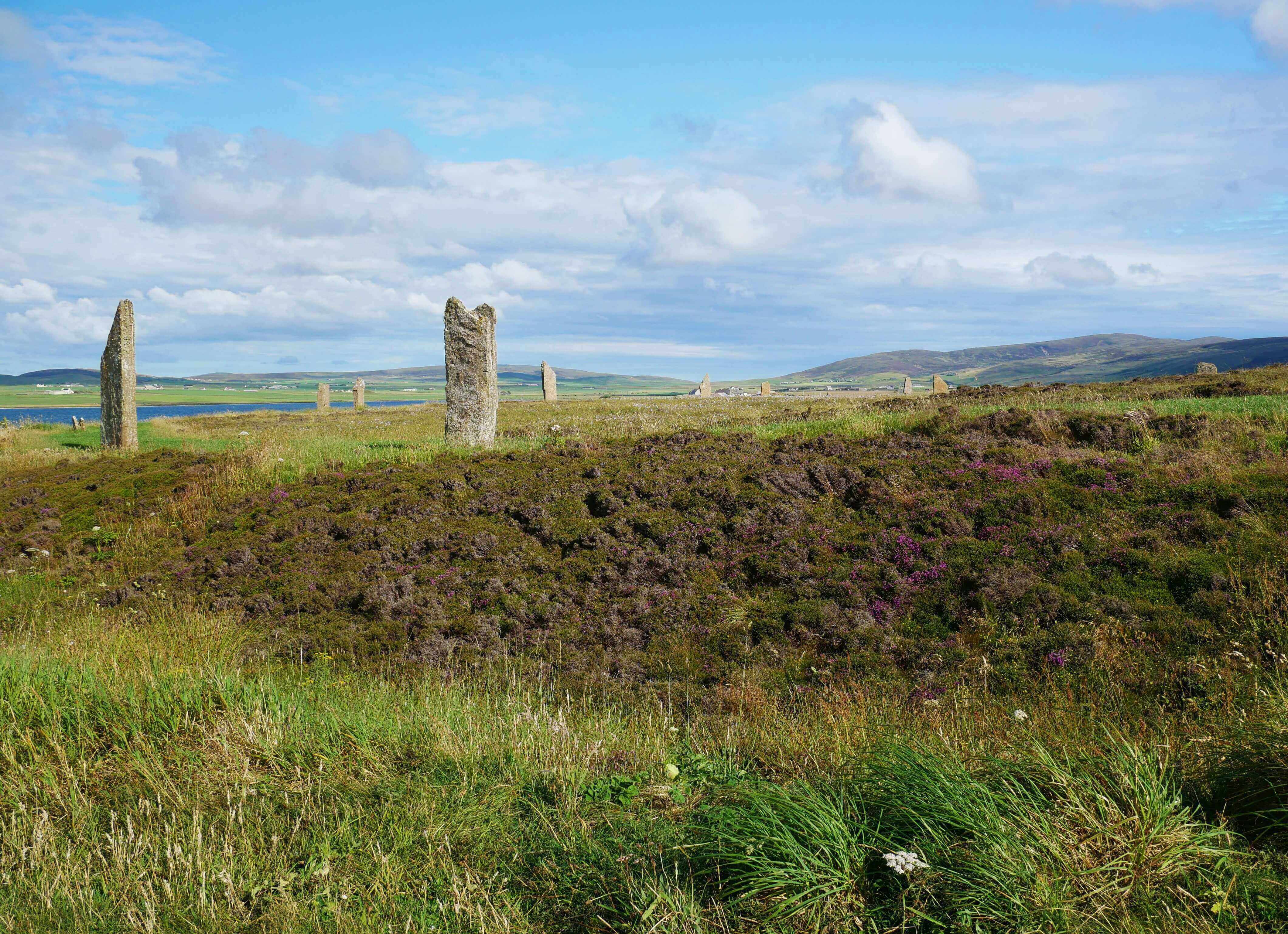 What compelled ancient builders to labor with these immense stones long distances over hilly and boggy terrain?
What compelled ancient builders to labor with these immense stones long distances over hilly and boggy terrain?Artistic flair in the stone age
We can see that the stones were quarried from outcrops of rock, usually found on hillsides. Wedges would have been used to split the rock, breaking off a piece from along the top.
This process gave the builders one rough, natural face and edge and one smoother, quarried face and edge.
This pattern was consistent with all the stones: only one stone was taken from each outcrop.
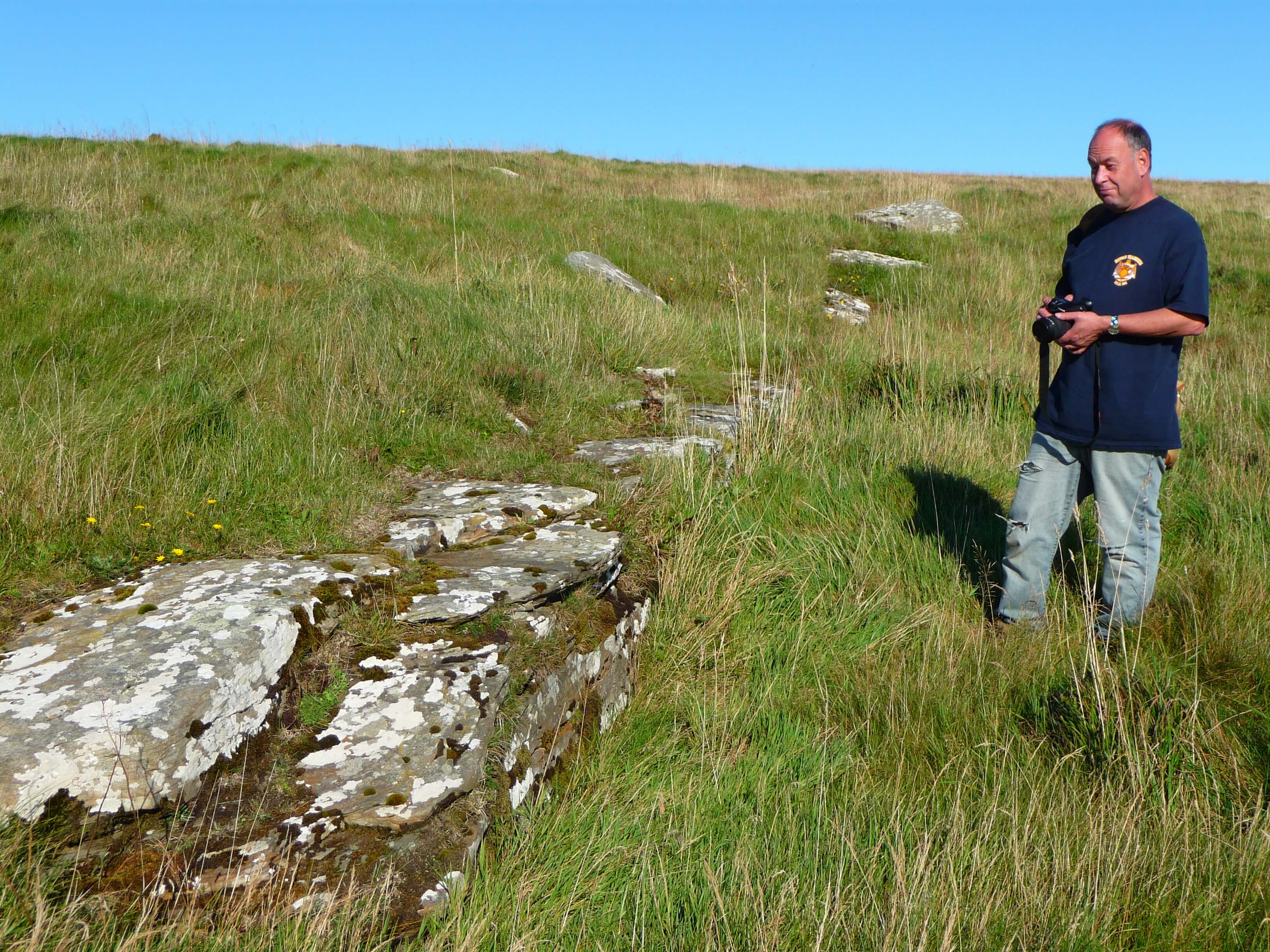 The quarry site at Vestrafiold
The quarry site at VestrafioldHow do we know this?
If another stone had been quarried further back into the hillside, that stone would still have one natural face and one quarried face, but there would be two quarried edges. If a stone was taken from beneath the first stone, it would have two quarried faces.
One intriguing thing I've noticed is that all the quarried faces are positioned to show from the outside. The natural faces show from the inside, leaving the brighter rock of the quarried side to face people as they look at the ring from outside the circle.
This artful manipulation must have made the stones appear even more impressive.
And remember - as the discovery of painted stones at the nearby Ness of Brodgar has shown - these standing stones may once have been decorated with colourful designs.
What else do we know about the stone circle?
- The great stone circle that is the Ring of Brodgar is the largest Neolithic stone circle in Scotland. To give an idea of its size, Stonehenge could fit inside the Ring of Brodgar.
- The circle itself is c103 meters (338 feet) in diameter, while the rock-cut ditch, or ‘henge’, is c123 meters (404 feet).
- The ring is 5,000 years old. This is older than Stonehenge and the great pyramids of Egypt, though still younger than the nearby Stones of Stenness.
- It's one of the four monuments that make up the UNESCO World Heritage Site called ‘The Heart of Neolithic Orkney’.
- Today there are 21 erect stones, two fallen stones and a further ten that can be seen as stumps or the packing stones that once a stone in place.
- It is often repeated that there were originally 60 stones. This is an assumption. However, at least 40 stones have been identified, with room for another 20 if they were equally spaced.
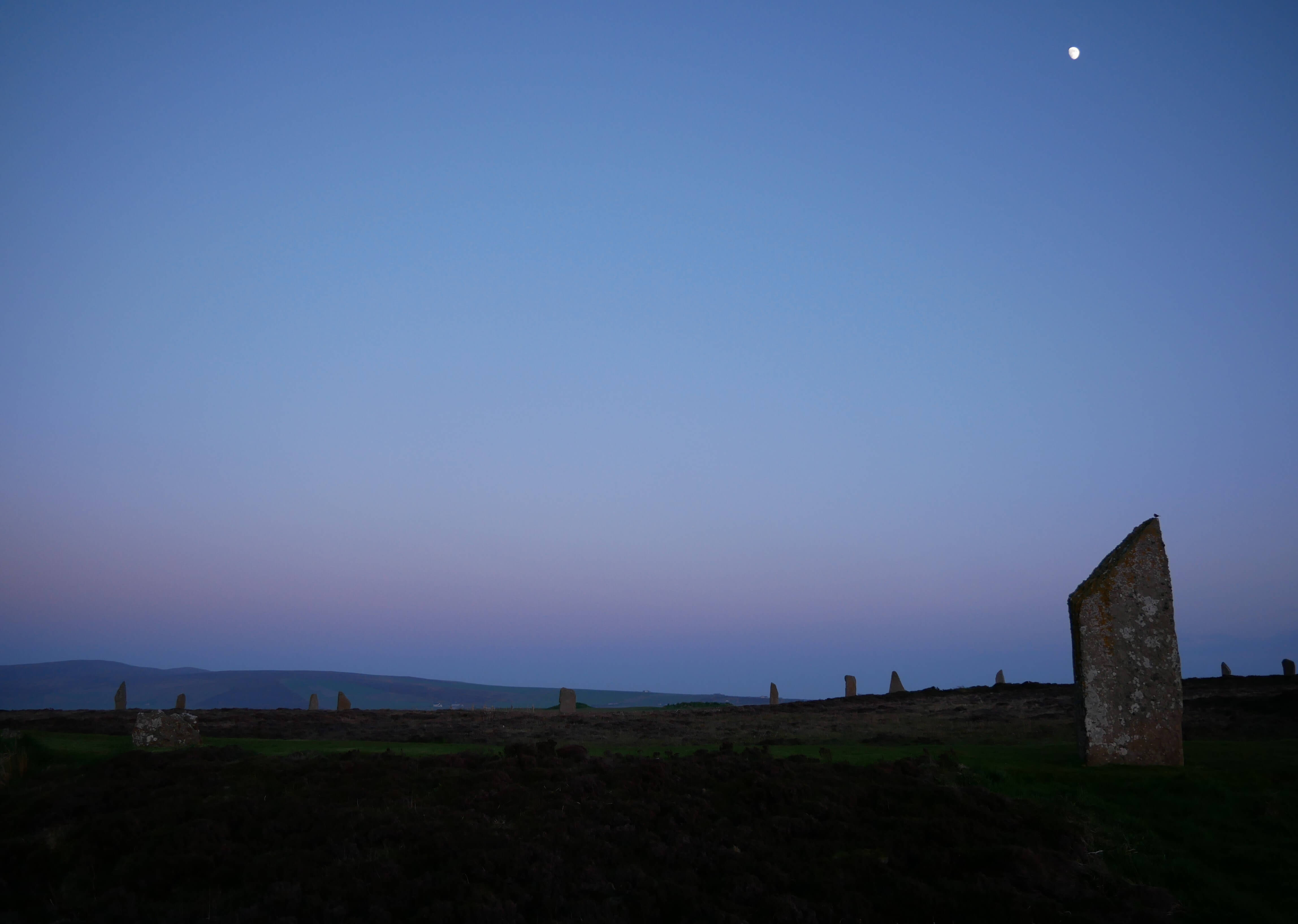
The area around the stones
Around the Ring of Brodgar is a rock-cut ditch, 3 meters (10 feet) deep. It seems to have been put in place as the last phase of construction, after the stones were erected.
I had the privilege of working on an archaeological dig in this ditch in 2008. I like to think that I was the first Orcadian man to stand there since Neolithic times. (I can get away with saying this because the other diggers weren't Orcadian.)
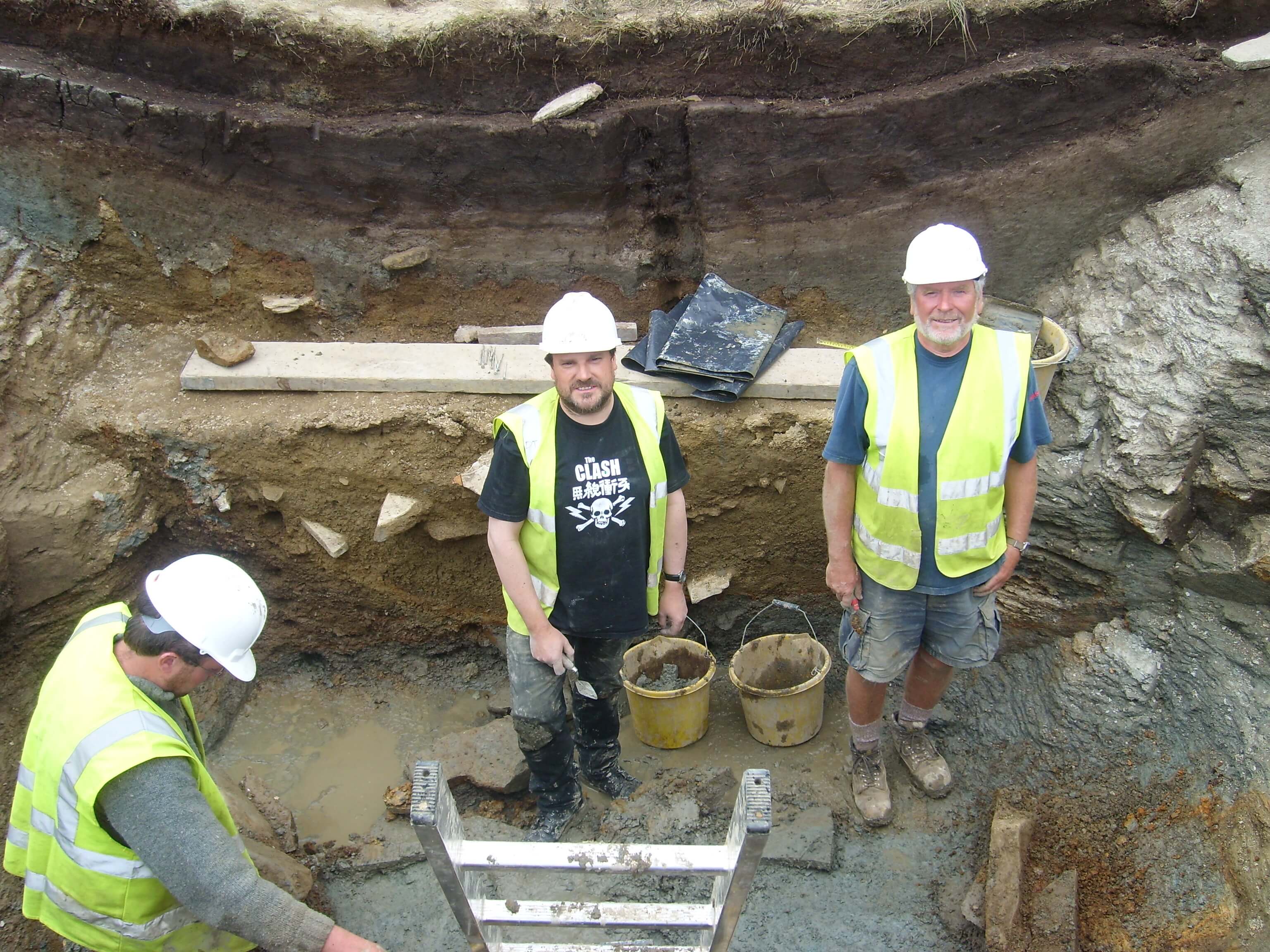
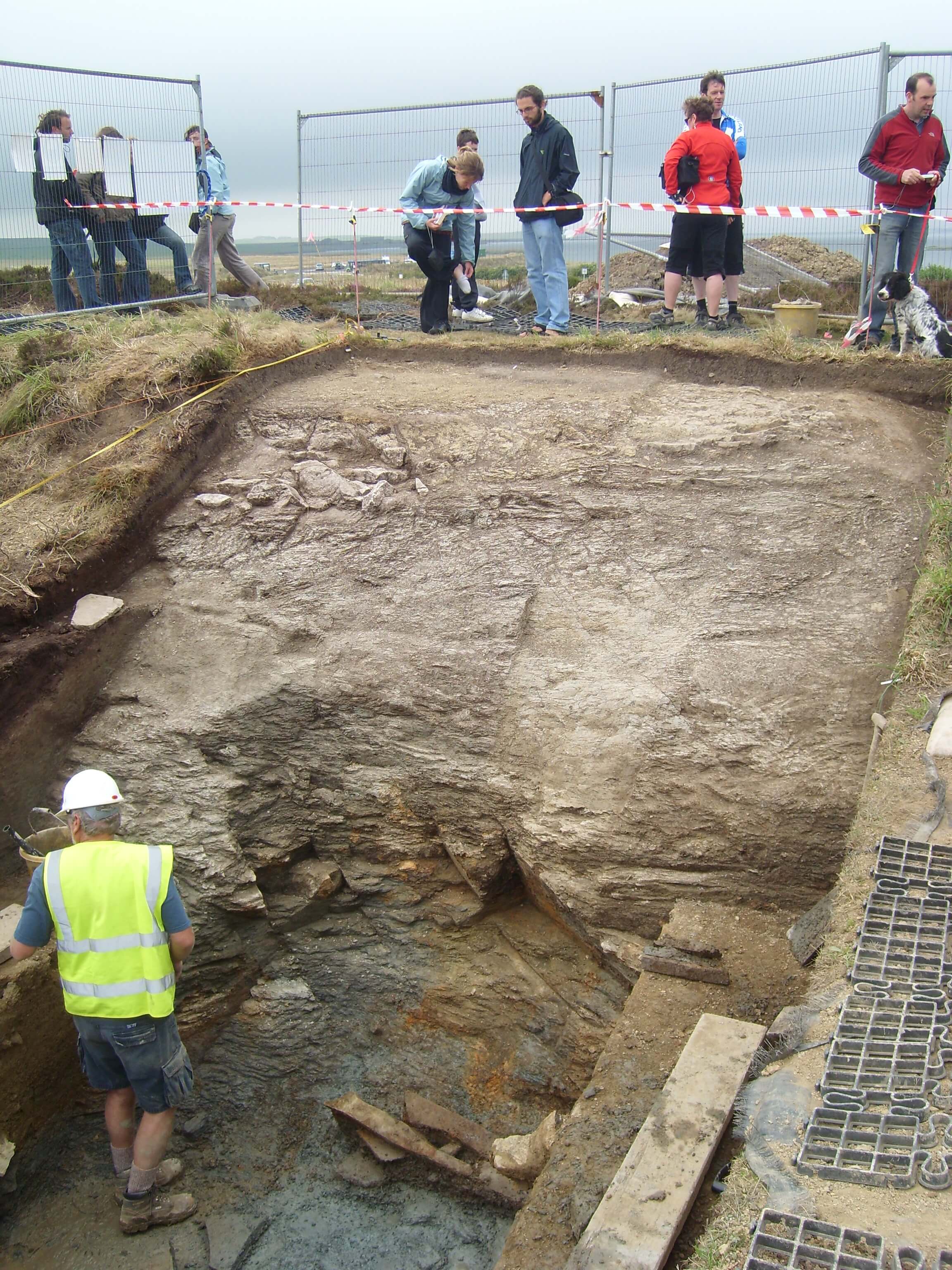
What did we discover there?
Teams of Neolithic workers were given sections to dig in this ditch. The effort involved in digging through rock was considerable. They would have been using hammer stones, antler picks and scapula shovels made from the shoulder blade of cattle.
They dug a series of pits, which were then joined together, giving the ditch a shape reminiscent of a string of sausages.
The spoil from the ditch may have been dumped away from the site, forming the huge mound nearby that is called ‘Salt Knowe.’
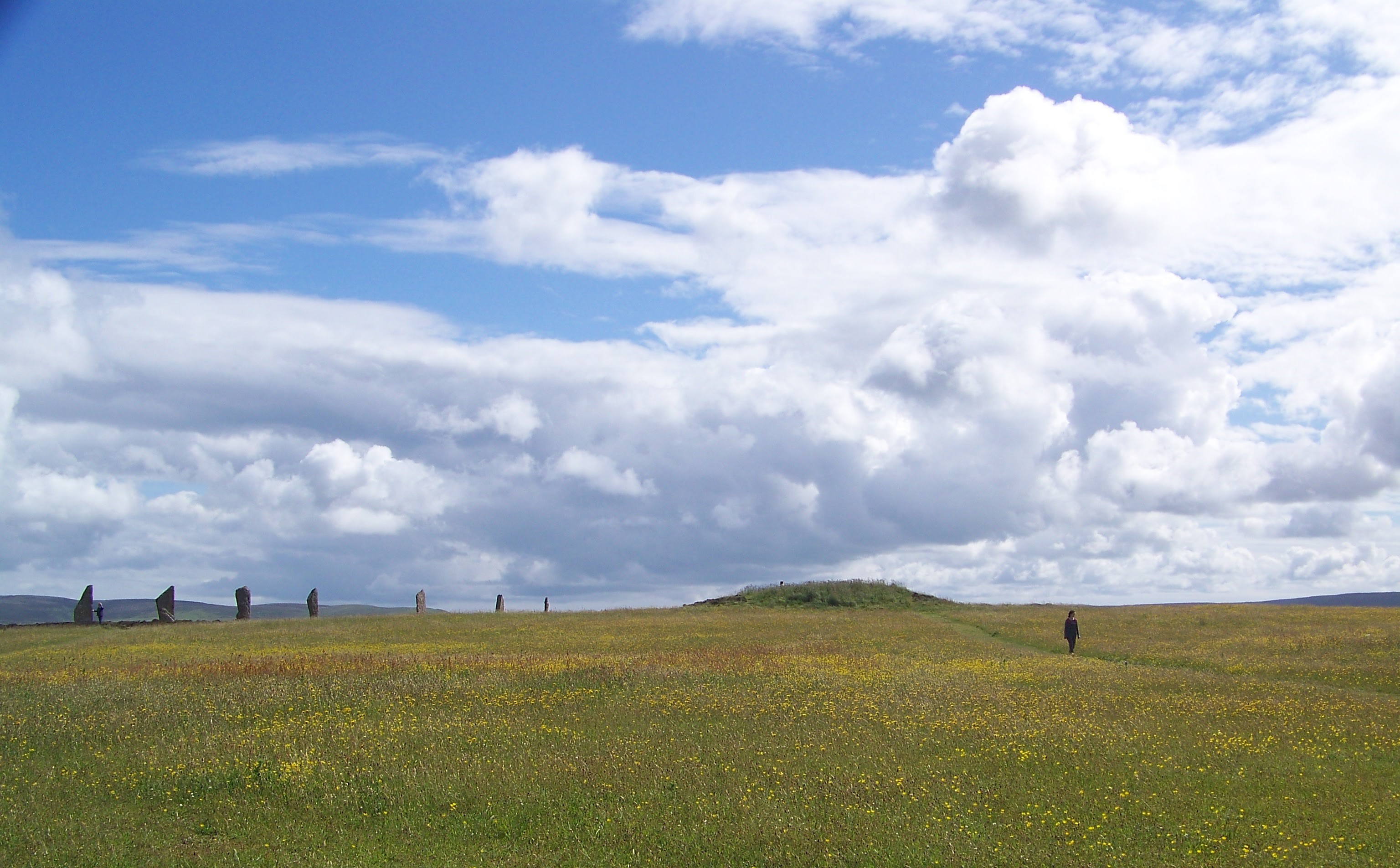
The knowe (pronounced "now") is named after the salty water of the Stenness Loch. A mound by the side of the Harray Loch is very sensibly called ‘Fresh Knowe’, as the water there is fresh.
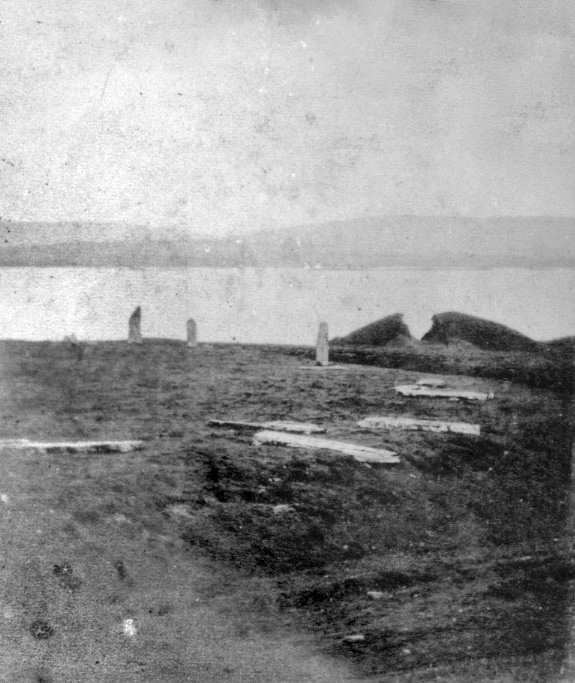 A trench through Fresh Knowe, known locally as "Farrer's Knowe" after archaeologist James Farrer. Notice the standing stones lying down. These were later re-erected. Photo courtesy of Orkney Library & Archive
A trench through Fresh Knowe, known locally as "Farrer's Knowe" after archaeologist James Farrer. Notice the standing stones lying down. These were later re-erected. Photo courtesy of Orkney Library & ArchiveSalt Knowe has not been examined and remains a mystery, but it could be formed from rock and earth taken from the ditch during construction.
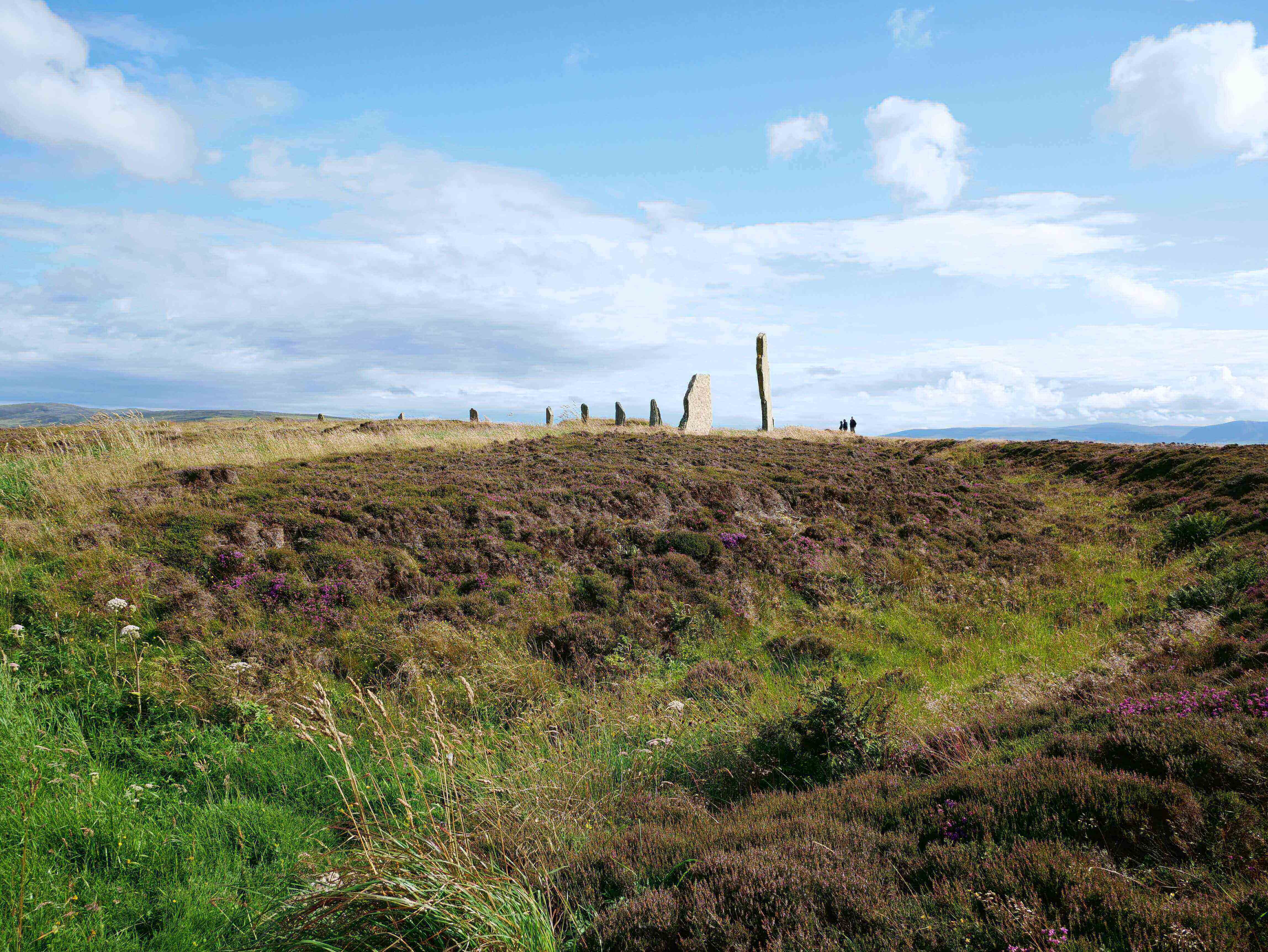 It seems likely that the ditch would have contained water at certain times of the year.
It seems likely that the ditch would have contained water at certain times of the year.
What was the Ring of Brodgar used for?
The Ring of Brodgar should not be seen as an isolated site, but as one part of a huge ceremonial complex of standing stones and buildings.
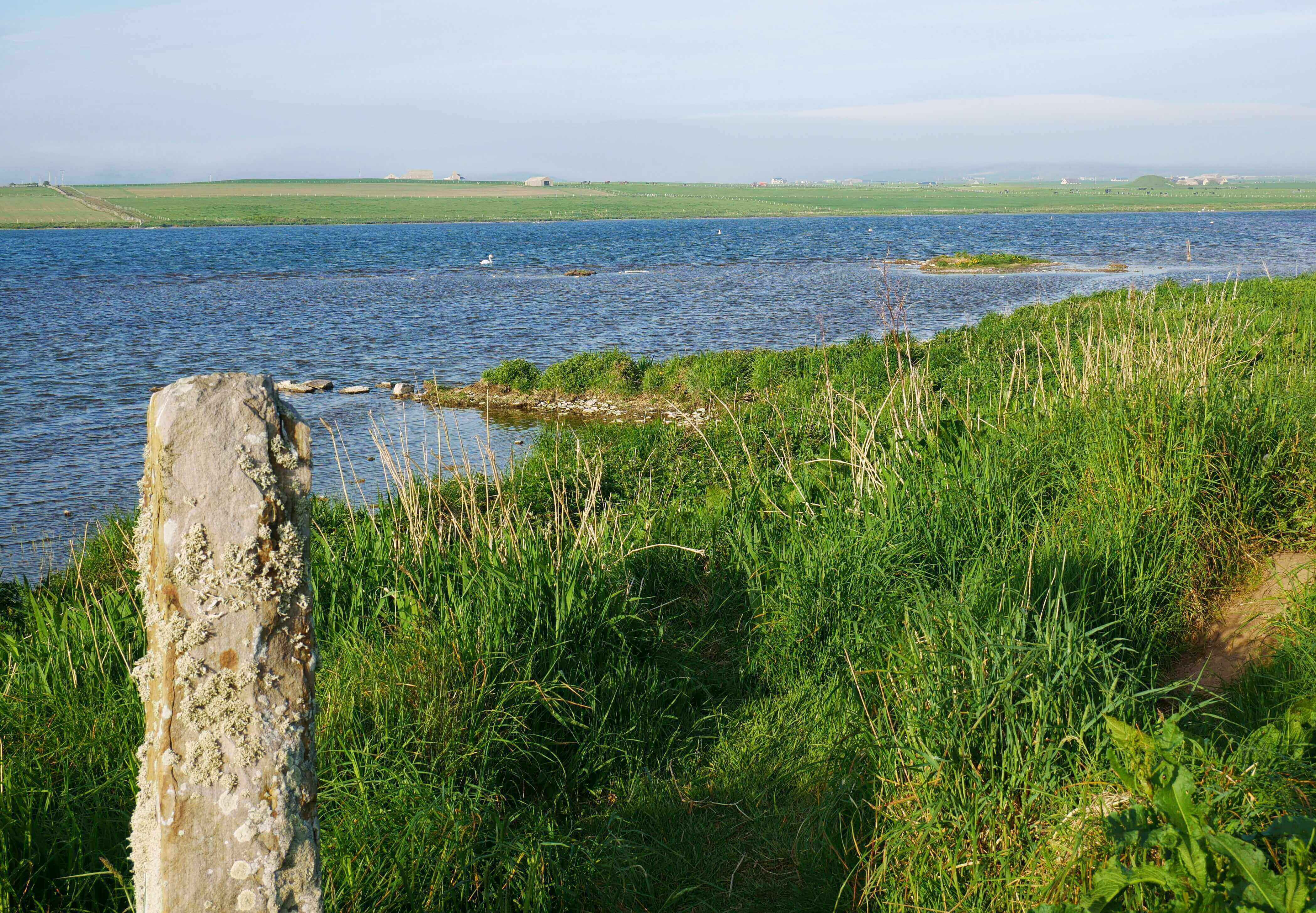 Maeshowe is visible across the loch from Barnhouse - top right in photo
Maeshowe is visible across the loch from Barnhouse - top right in photoAt the south of this area are the Stones of Stenness ...
...with the Barnhouse Neolithic settlement nearby.
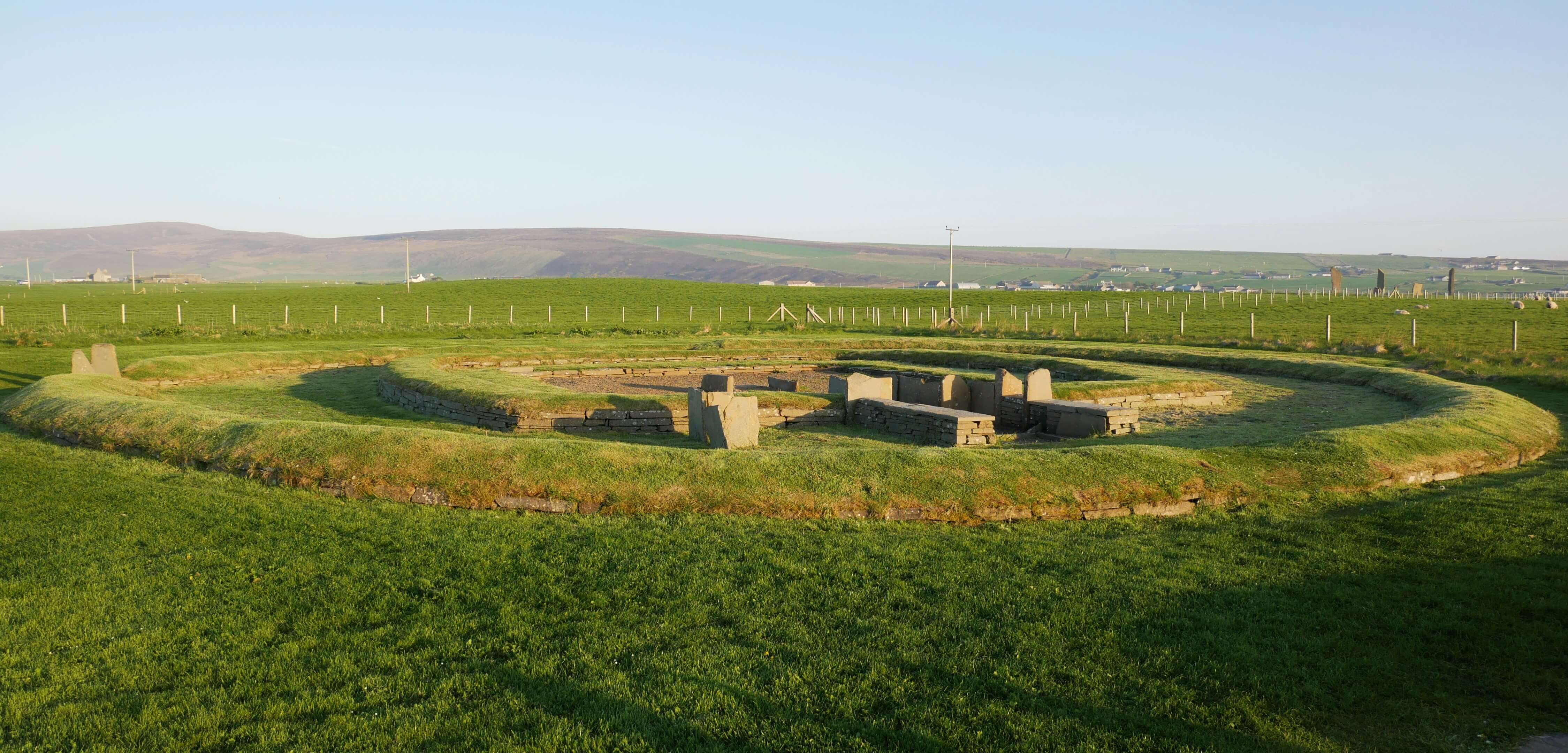
Between the Stones of Stennes and the Ring of Brodgar is the Ness of Brodgar. Its large walls and buildings lack the usual domestic furnishings, suggesting a purely ceremonial use.
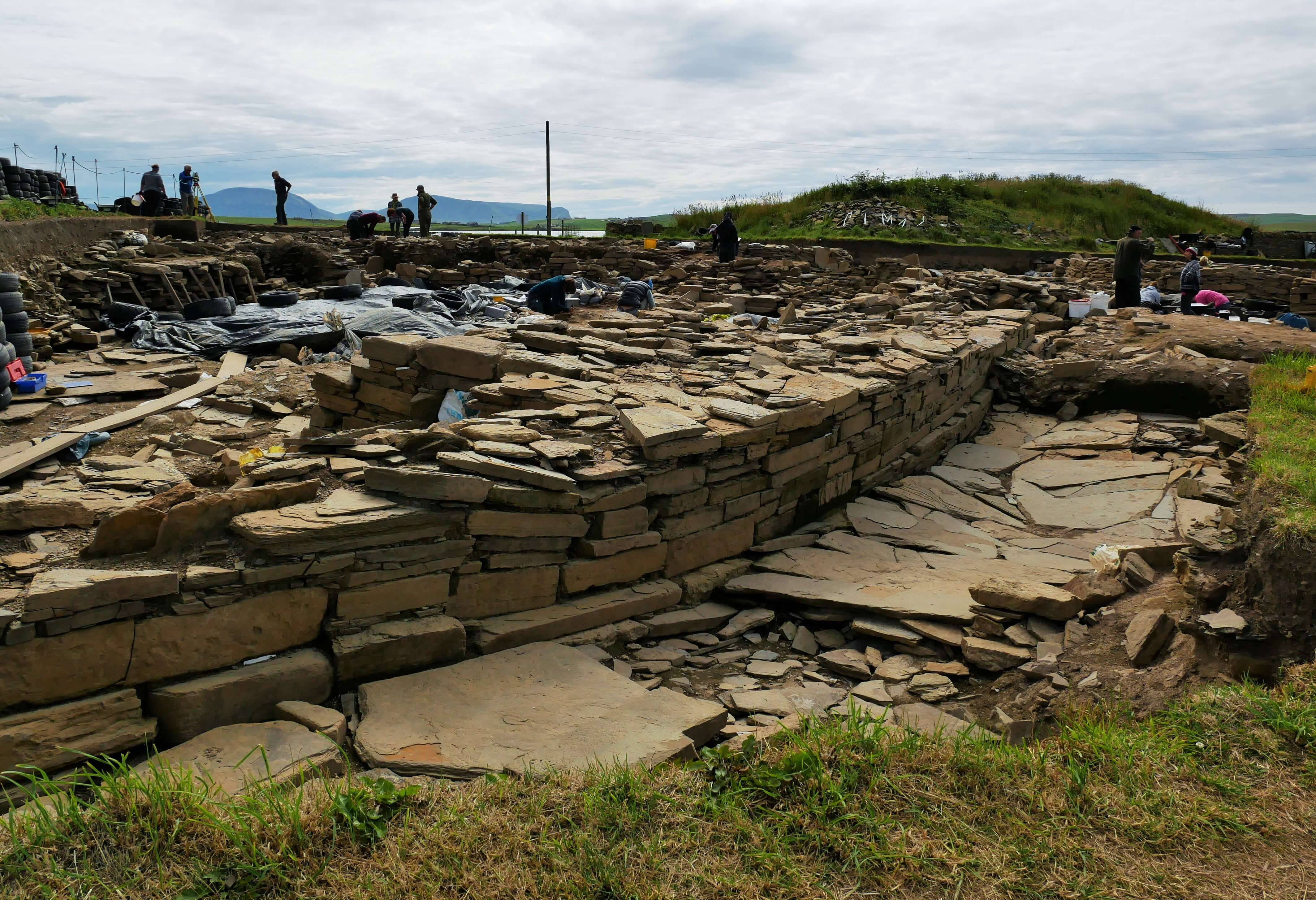
Beyond the Ness of Brodgar, lies the Ring of Brodgar, which is surrounded by mounds containing Neolithic tombs and Bronze Age burial mounds.
The presence of these tombs shows that the site was considered sacred and important for a long period of time after the Neolithic, as well.
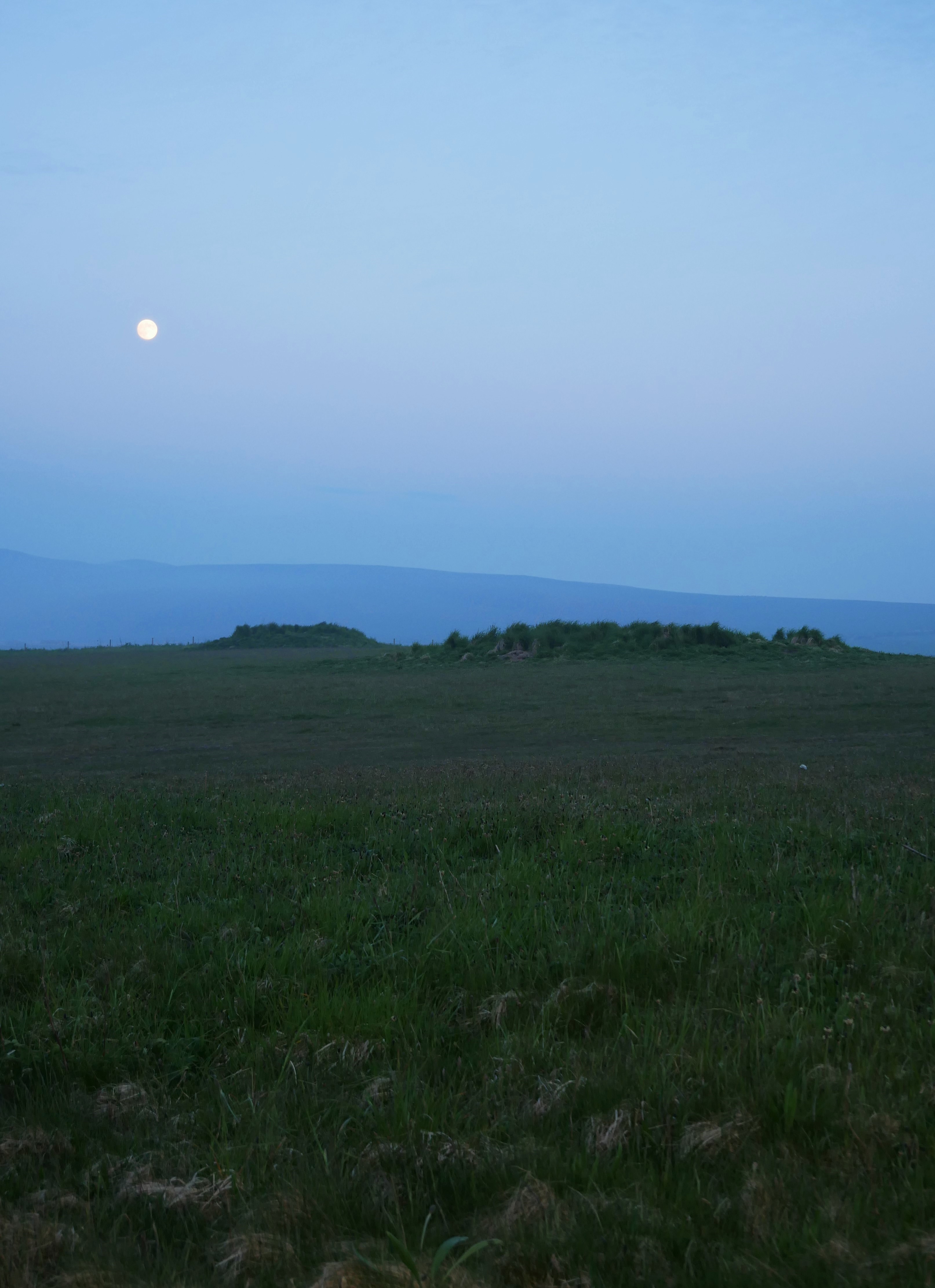
An earthen work boundary wall, called the Dyke of Sean (pronounced see-in) crosses the isthmus. Erosion caused by cattle to this earth wall has uncovered finely-made stonework that looks Neolithic in origin.
On the crest of the hill stands the enigmatic Ring of Bookan.
The mystery remains
The Ring of Brodgar doesn’t seem to have any astronomical alignment. Although with so many stones, they would have lined up with something.
Maybe great ceremonial gatherings took place in this special landscape, giving people in Neolithic times the opportunity to meet, trade and fall in love. Maybe marriages were arranged?
What were their spiritual beliefs and practices? Their language? Their philosophical outlook on life?
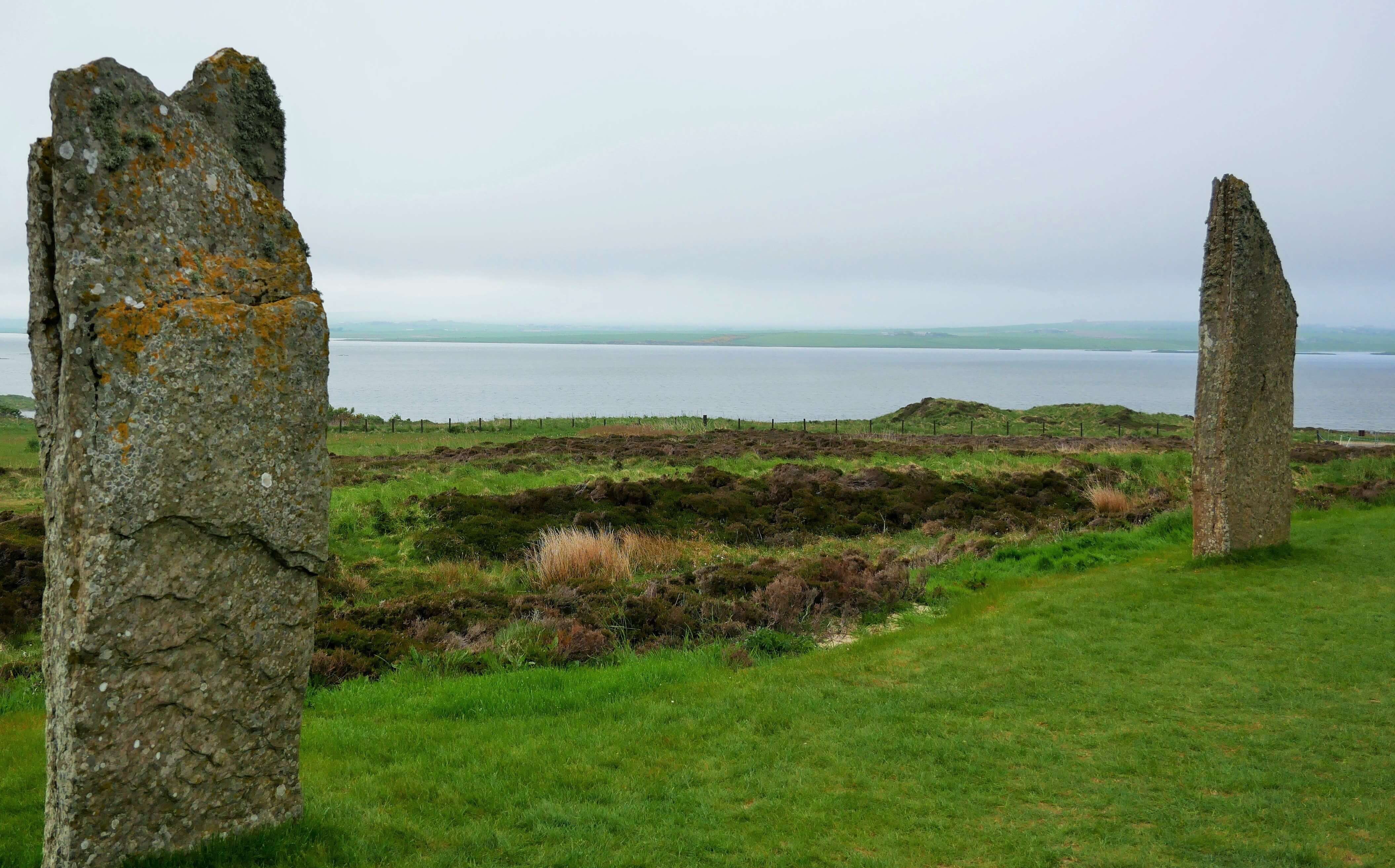
In the end, all we know is that we simply don’t know. But we can imagine ....
A Natural Amphitheater
Imagine yourself standing at the Ring of Brodgar. Look at the landscape surrounding you. You immediately get a sense of why this place was chosen to create a sacred monument.
You are standing on a narrow ridge of land between two lochs. 5,000 years ago, when the ring was built, there wouldn’t have been lochs here, but very low, marshy ground with some standing water. The sea hadn’t broken through into the Stenness Loch at the Brig o’ Waithe at that time, so the water that pooled here in the Neolithic had drained off from surrounding higher ground.
The thing that you'll notice if you turn around 360 degrees is that the landscape forms a huge, natural amphitheater surrounded by hills. On all sides you'll see hills and high ground enclosing this whole area, setting it apart like a holy basin.
If you are lucky enough to have the whole stone circle to yourself, you'll feel that this is a special place. What it is, I can’t put into words, but it exists.
It was something that people in our prehistory felt, too. This location was viewed as a sacred site and a desirable place to be buried for a thousand years of prehistory. The surrounding landscape is dotted with mounds containing a Neolithic tomb and Bronze Age barrows for the dead.
This feeling of awe was not limited to prehistory. It's revealed through Orcadian folklore, as well. And even today, the Ring of Brodgar is regarded as a sacred site by those who love this mysterious and enigmatic monument.
Visit the Ring of Brodgar
The path that leads to the ring begins at a car park across the road. You'll walk along a wooden walkway over marshy ground. In spring and summer, you'll enjoy a profusion of meadow sweet, bog cotton, yellow flag iris (called segs in Orkney) lady’s smock and ragged robin as you walk.
As you approach the stones they seem to rise out of the ground in front of you.
A reinforced path leads you to the ring itself after you cross the road. Disabled parking is situated by the side of the road next to this path.
You do have to cross the main road, so please keep an eye out for traffic.
Bear in mind that we drive on the left side of the road in Orkney, so cars may come from the opposite side than you're expecting.
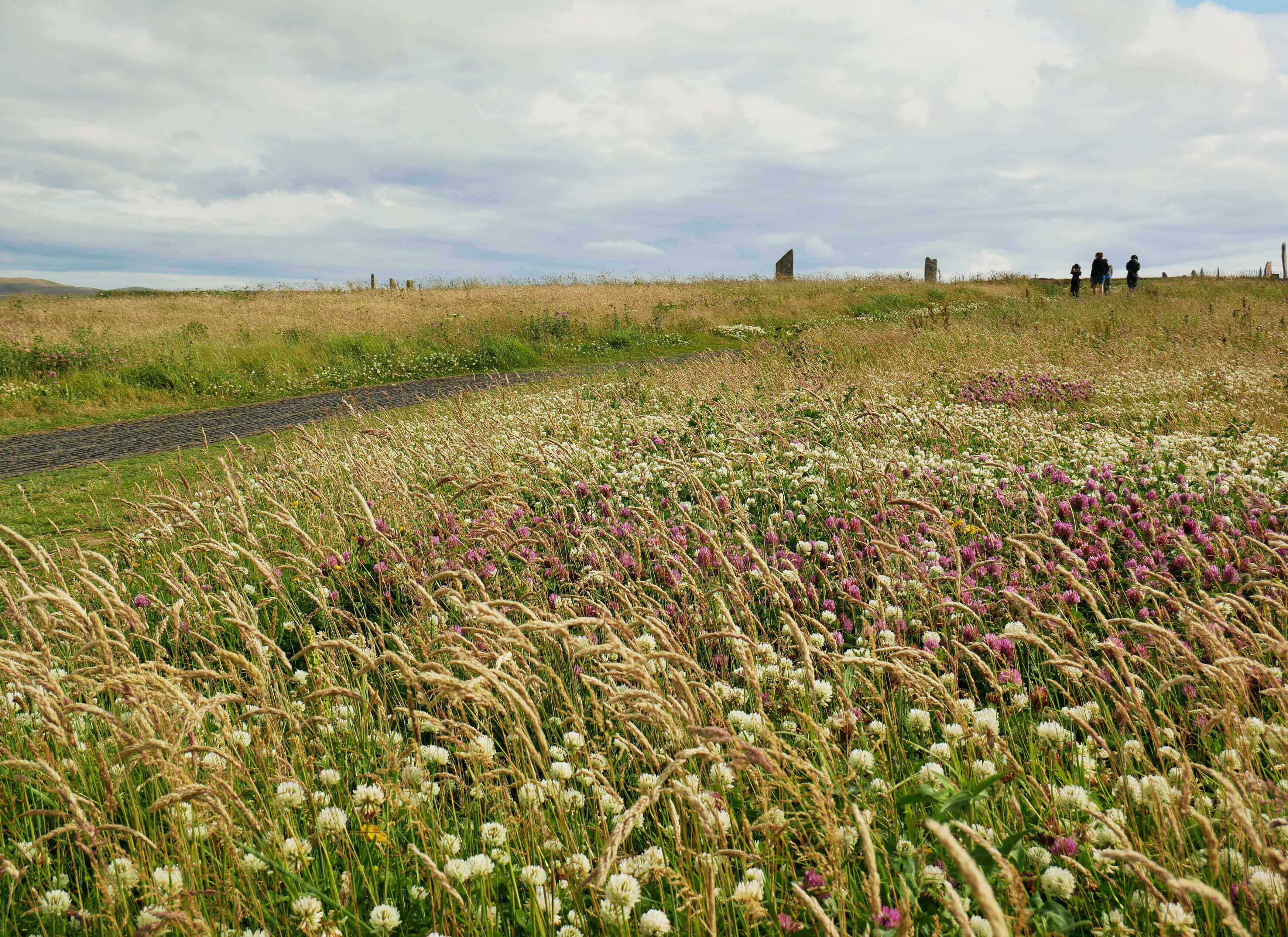
In recent years access to the inside has been restricted at times due to erosion of the path and the need to preserve the site. Please be patient, and observe the instructions as to where to walk.
It's for the good of the stones.
Don't worry - the view from outside the ring is still dramatic.
The True Story of the Ring of Brodgar
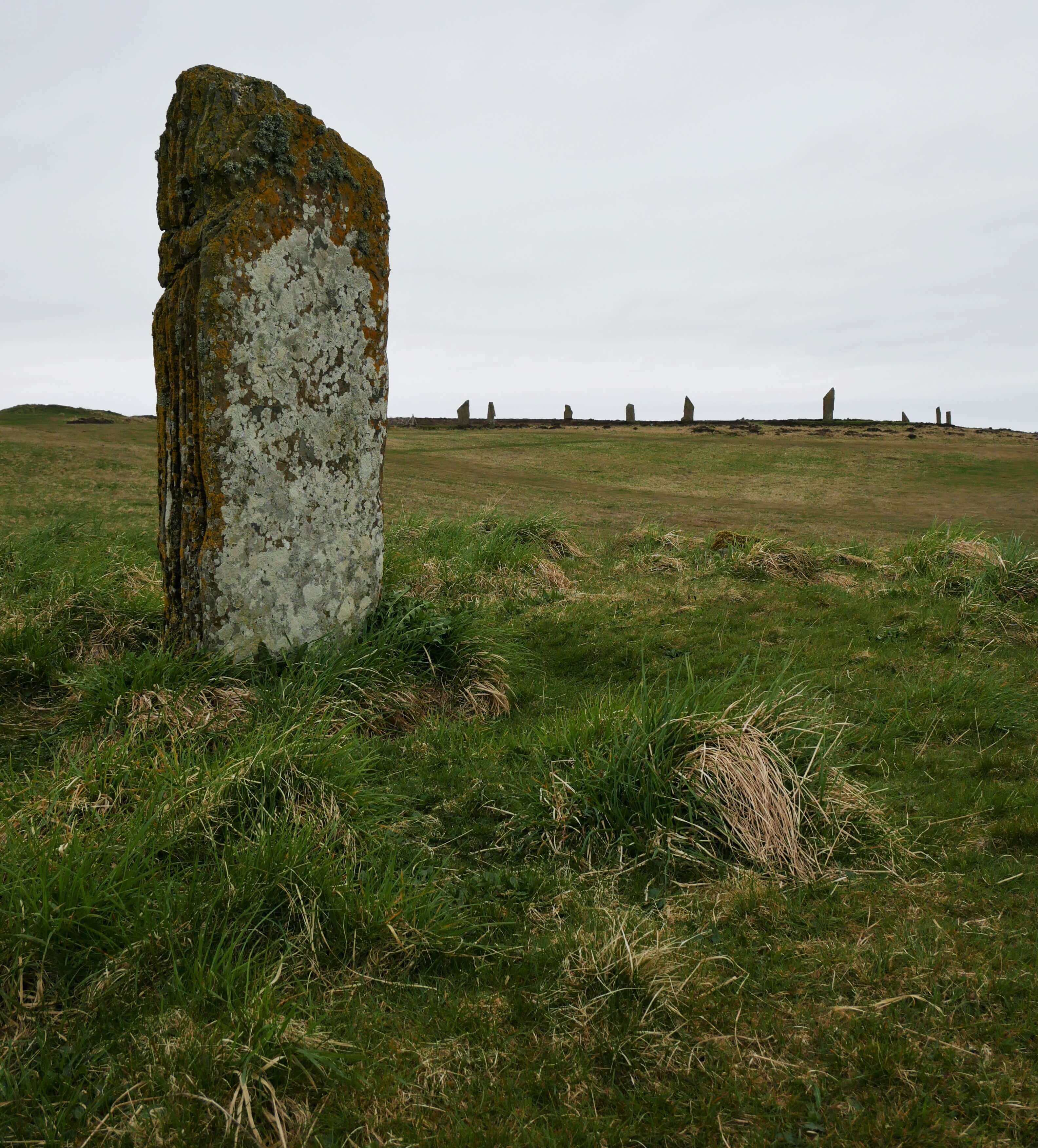 The ring as seen from the lonely Comet Stone - the fiddler in the story
The ring as seen from the lonely Comet Stone - the fiddler in the storyIn olden times in Orkney, the Comet Stone was known by local folk as the "Oily Stane."
Historian Geordie Marwick tells us that men took off their bonnets (caps) in respect when they passed the stone. When asked why, the men replied that they didn't know.
It was just the way it had always been done.
And finally ... couldn't resist adding this photo
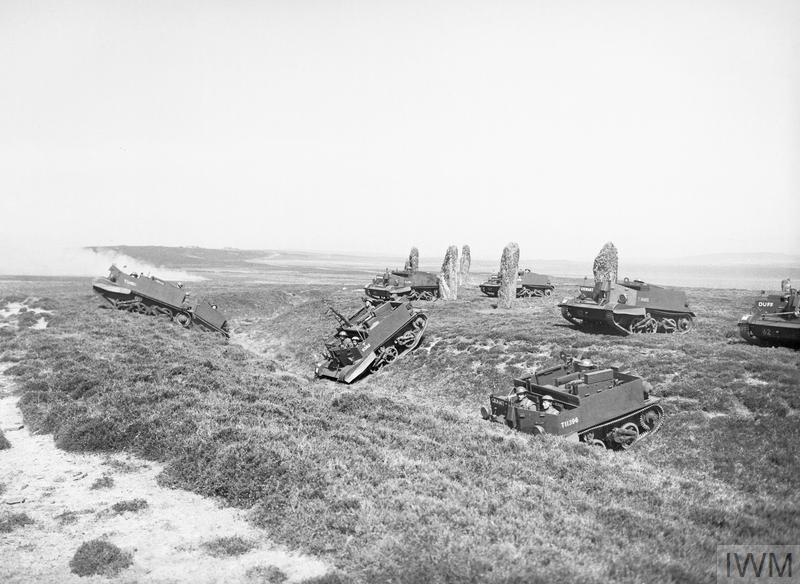 Bren gun carriers of the 9th Battalion, Gordon Highlanders pass between the prehistoric standing stones of the Ring of Brodgar on Orkney, 18 June 1941.
Bren gun carriers of the 9th Battalion, Gordon Highlanders pass between the prehistoric standing stones of the Ring of Brodgar on Orkney, 18 June 1941.Guided tours
This Neolithic wonder is free to visit and open year-round. Guided tours at Brodgar run throughout the year, courtesy of Historic Environment Scotland Rangers.
June, July and August: every day at 1pm
September through the winter months until the end of May: every Thursday at 1pm
Also ...
The Stones of Stenness and Barnhouse tours run throughout the year.
June, July and August: every Monday, Wednesday and Friday at 10am
September through the winter months until May: every Wednesday at 10am
Enjoy!

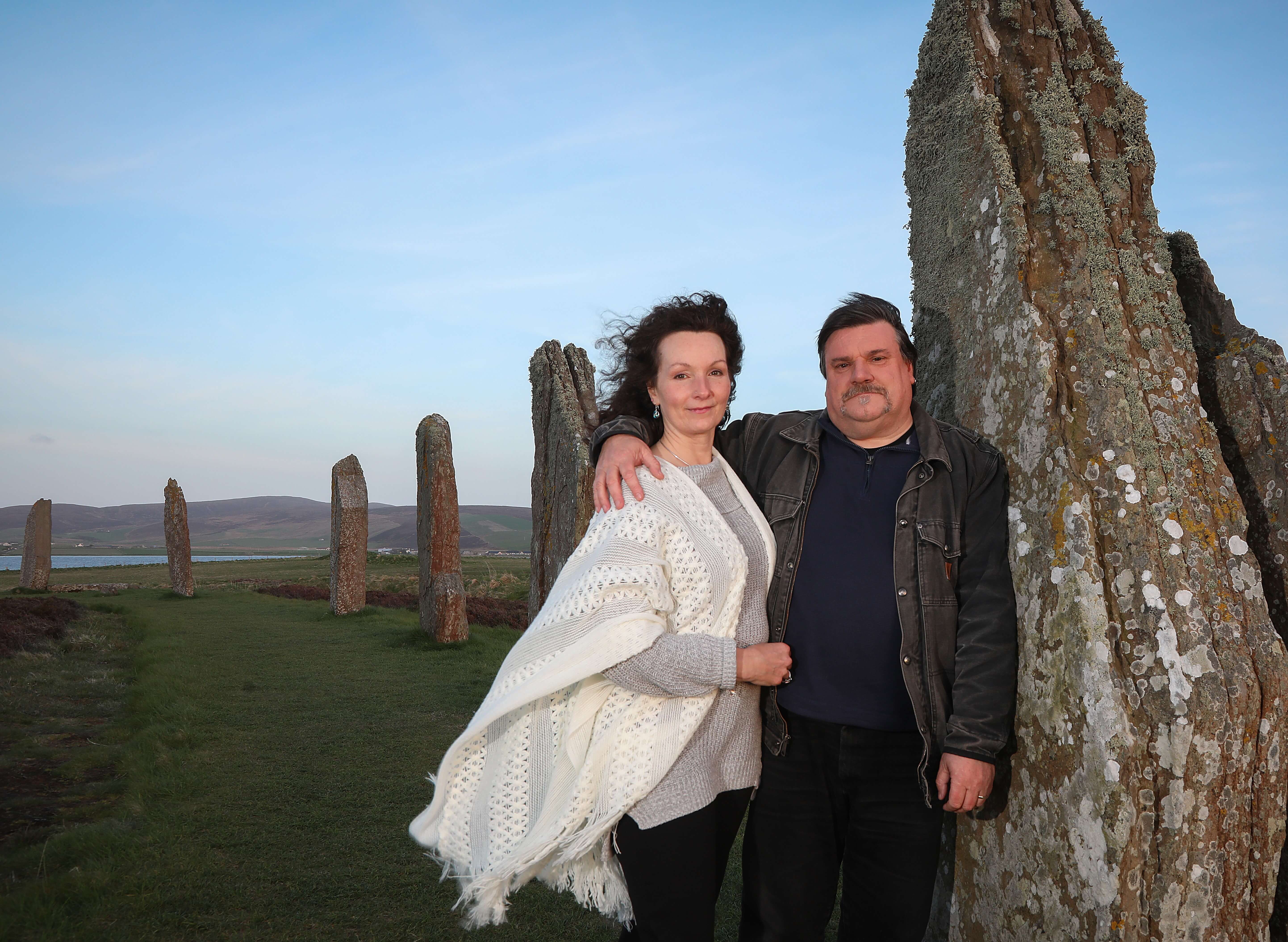
More must-see Orkney attractions

Mermaid image (Rhonda's pages) and storyteller image (Tom's pages), and all other illustrations except where noted are here by the courtesy of our dear friend - Stromness author, artist and historian, Bryce Wilson MBE, who owns all copyrights. Thanks, Bryce!

